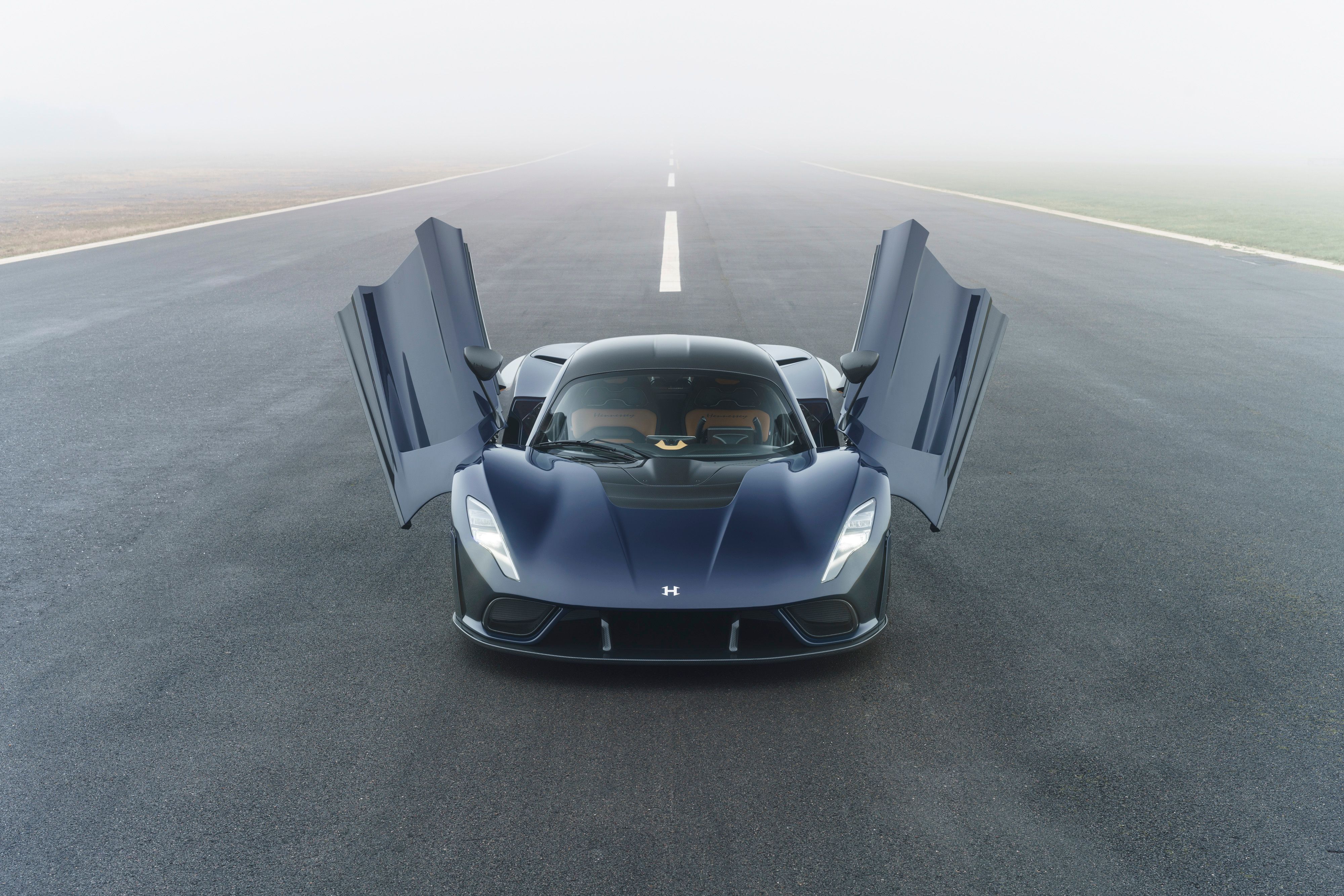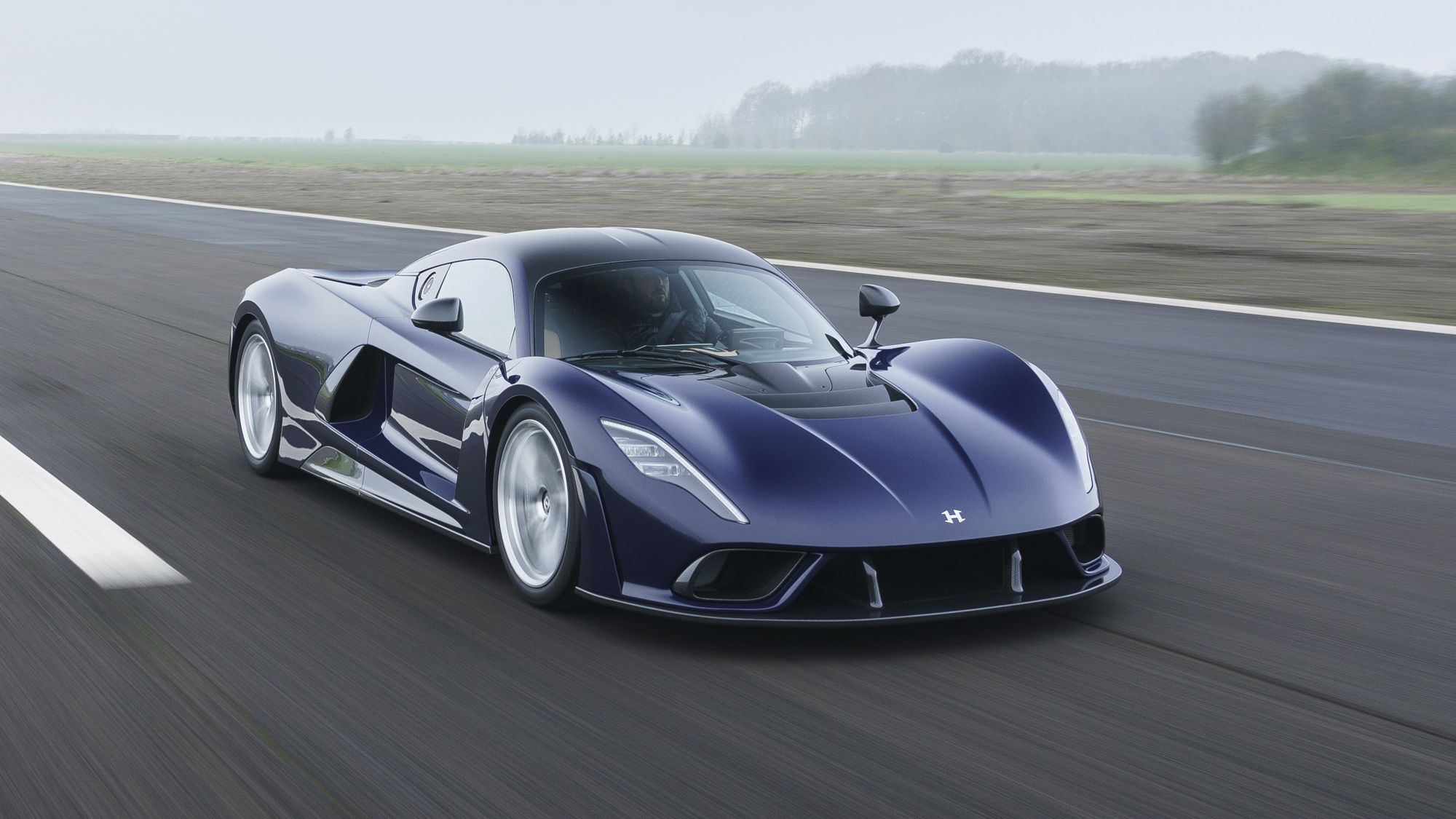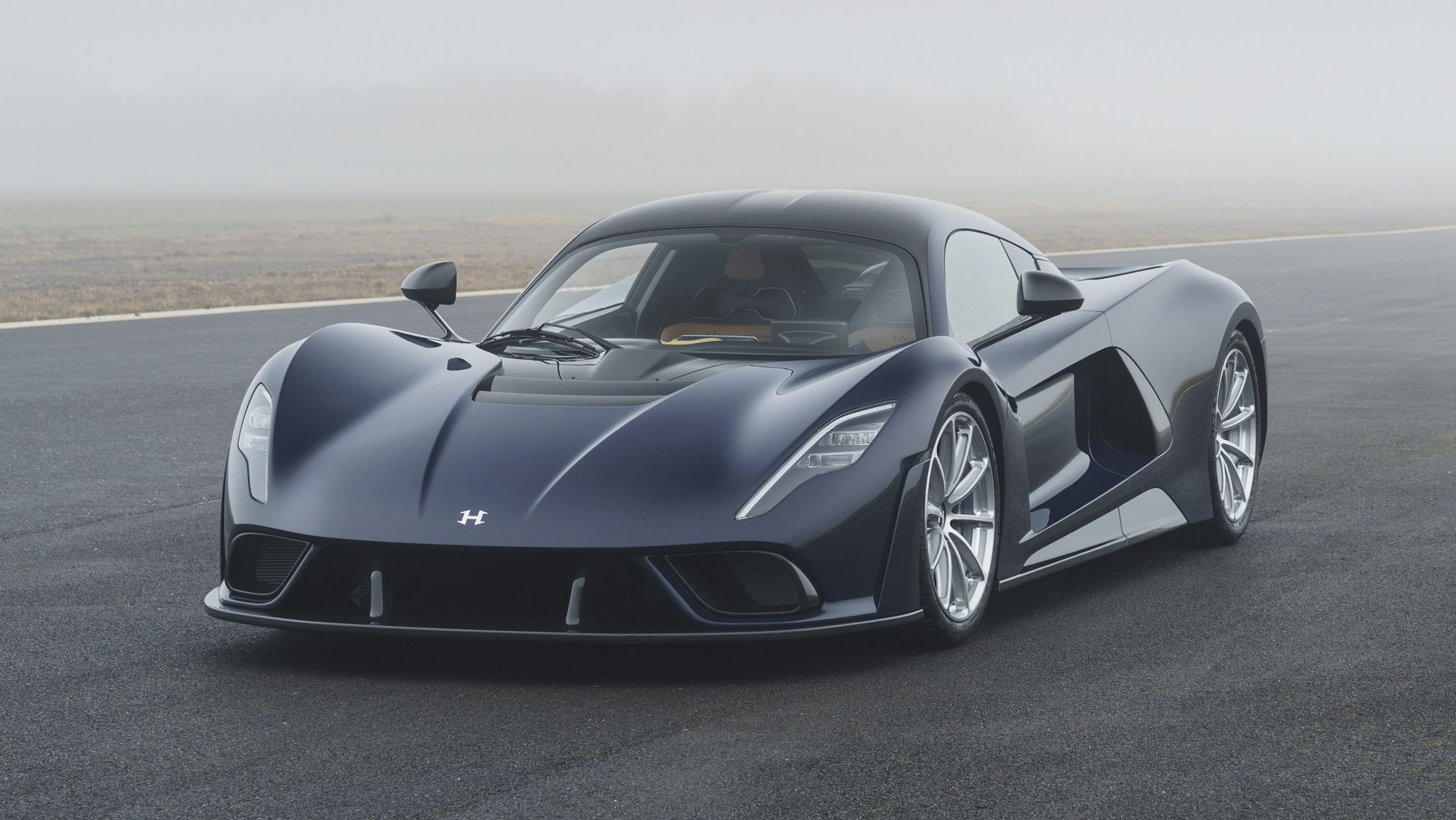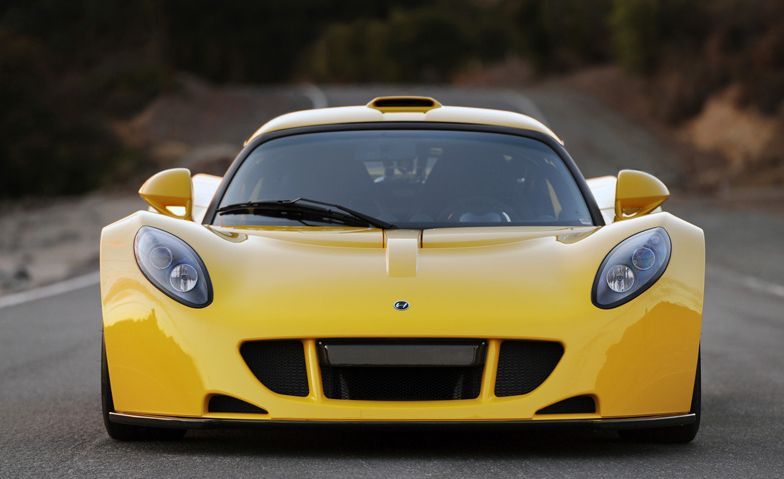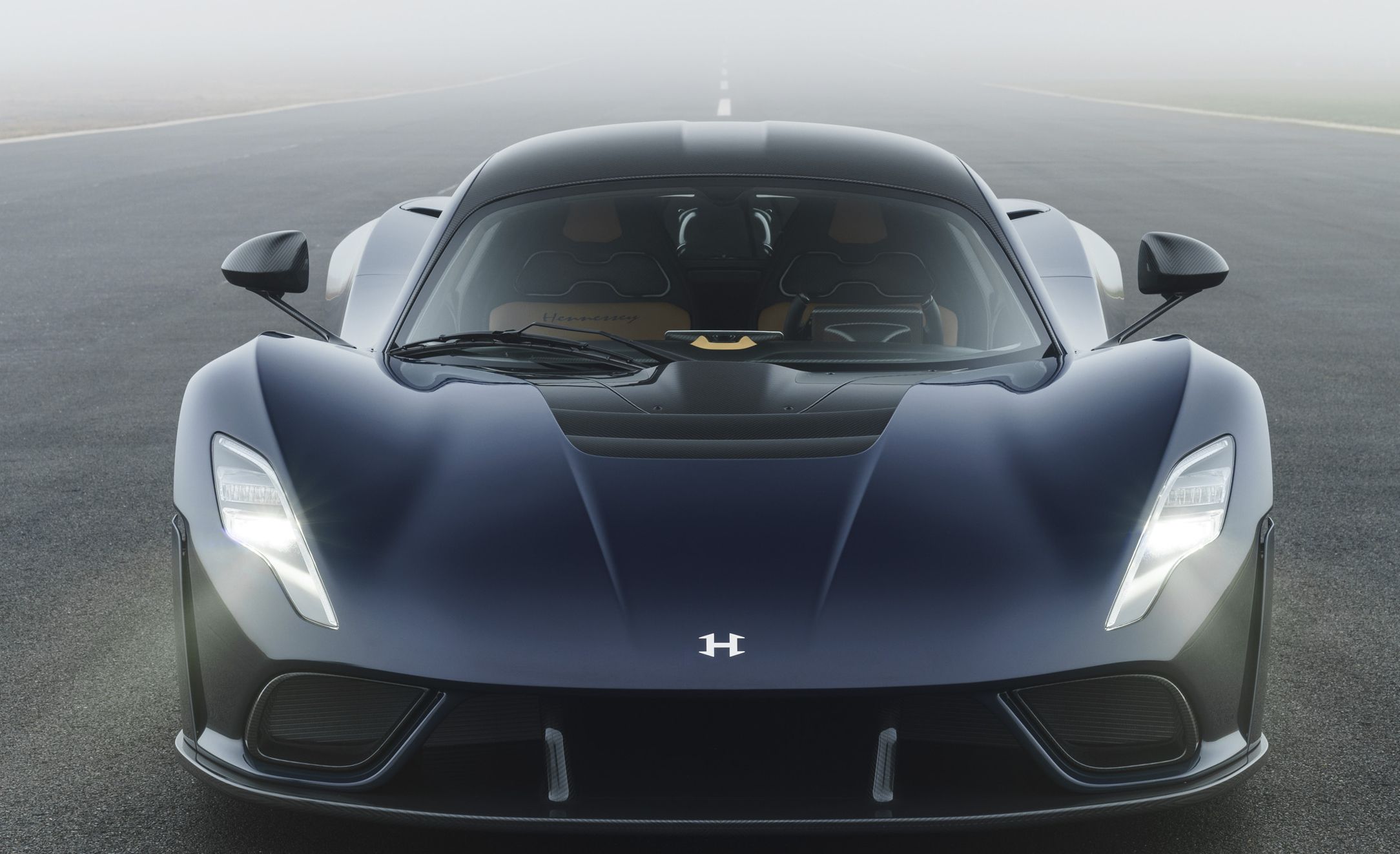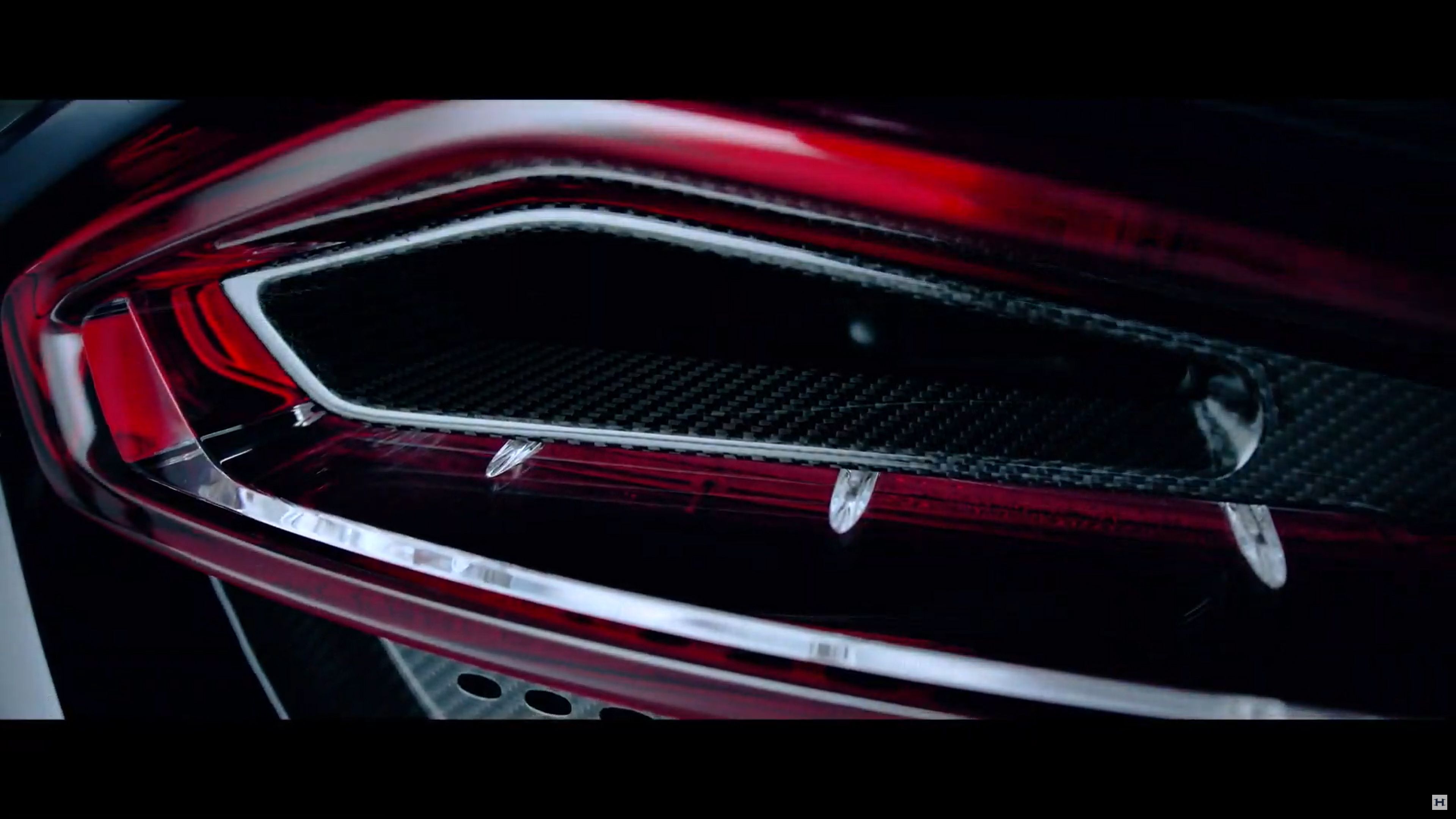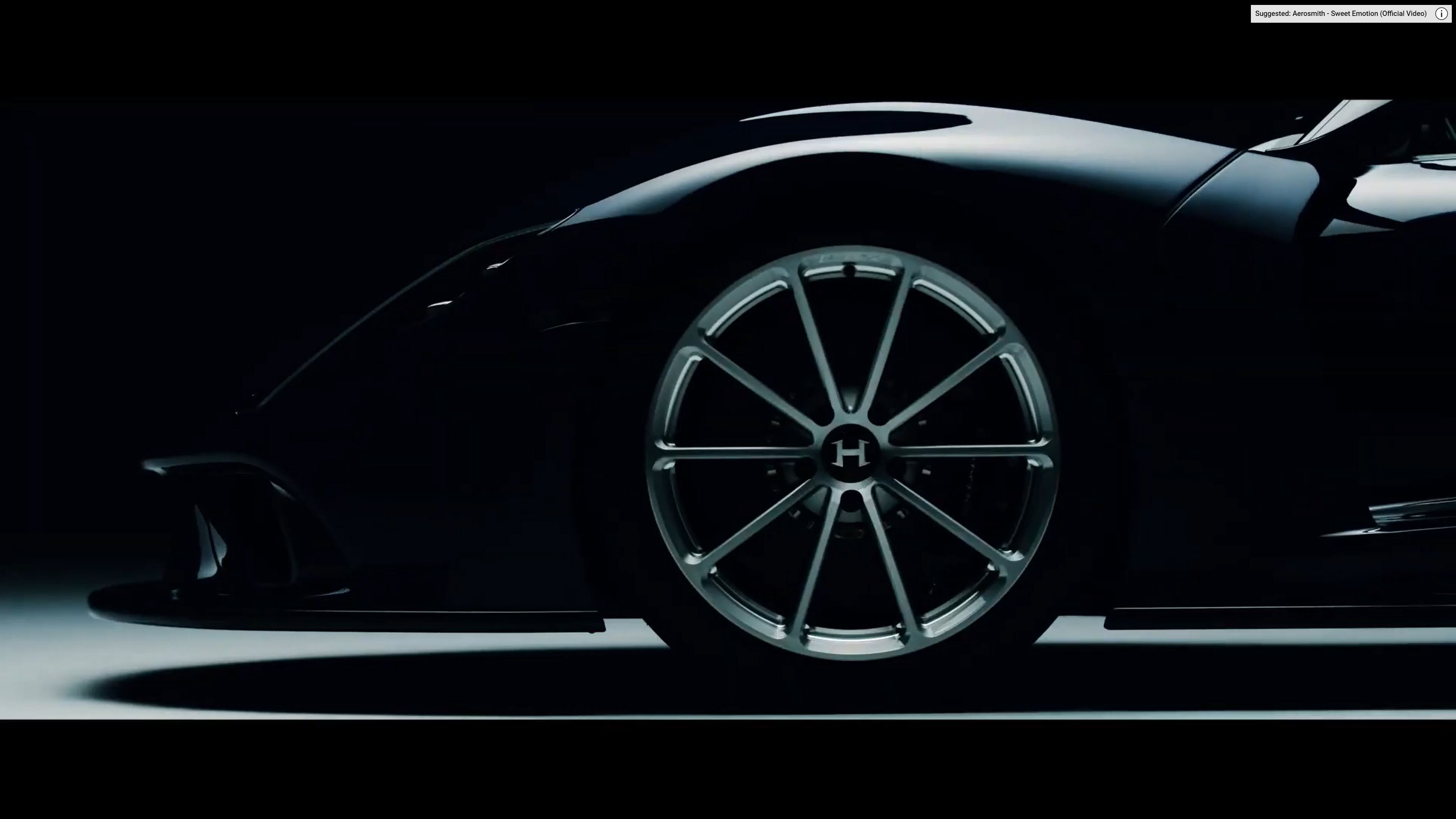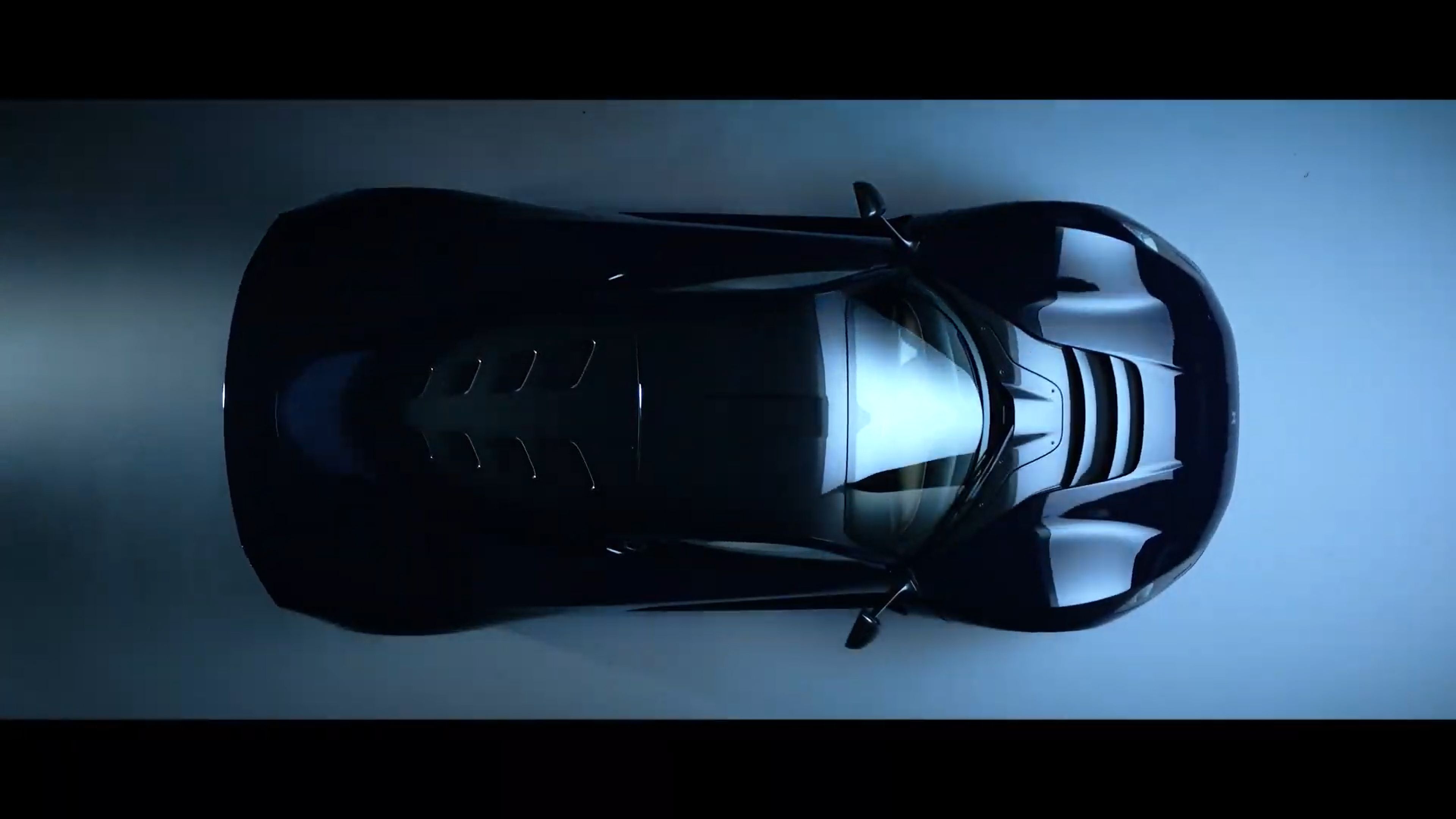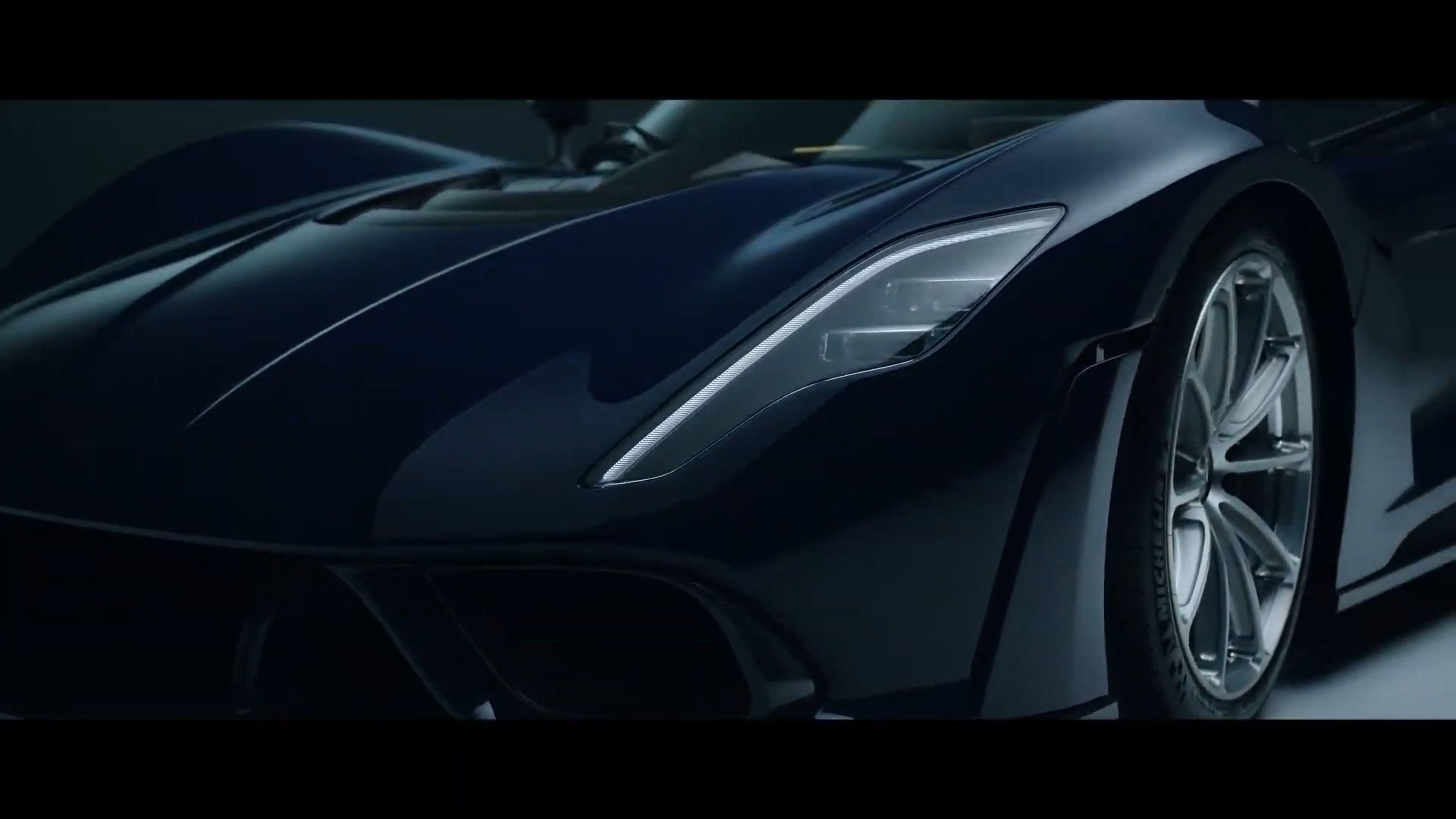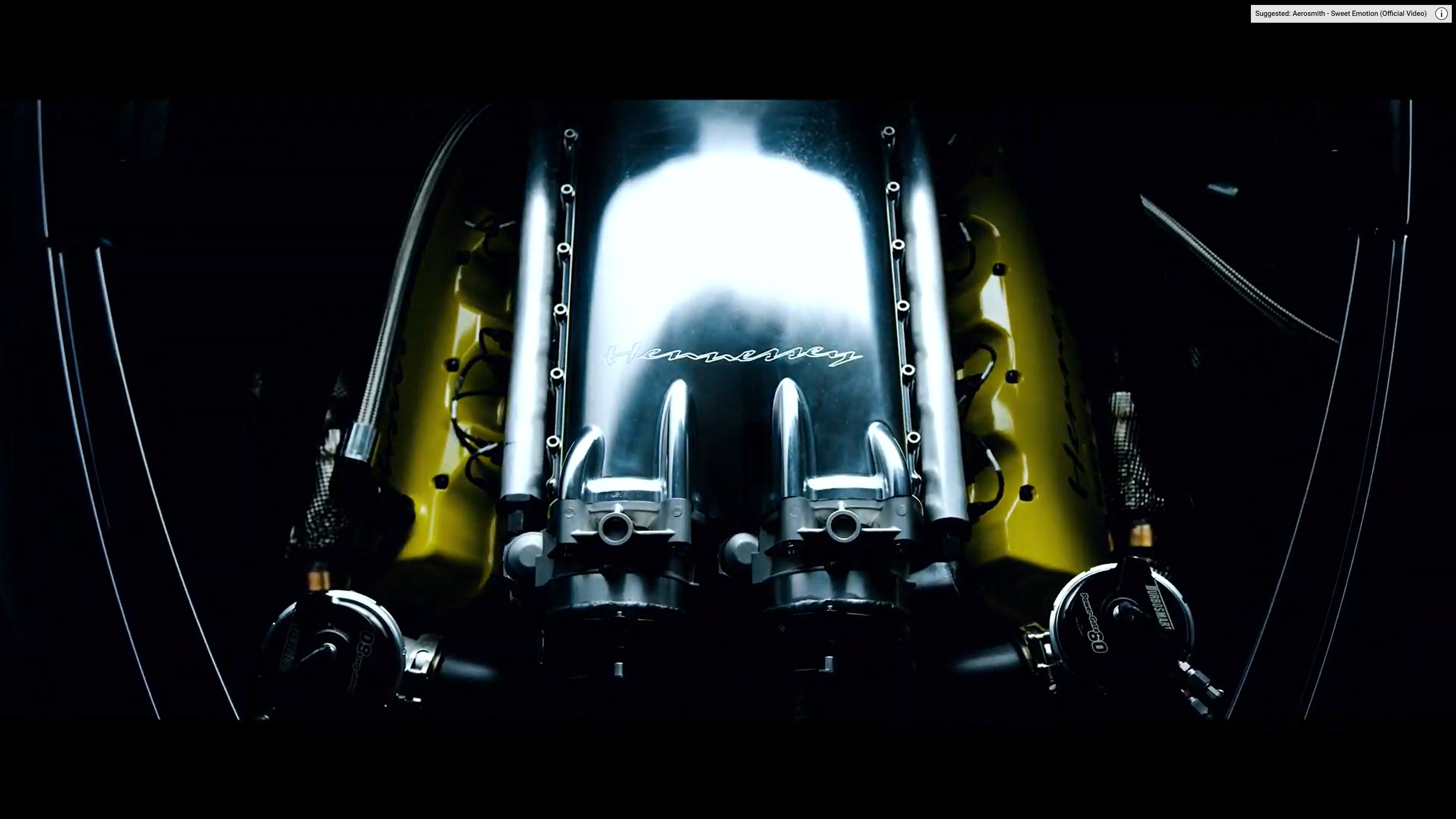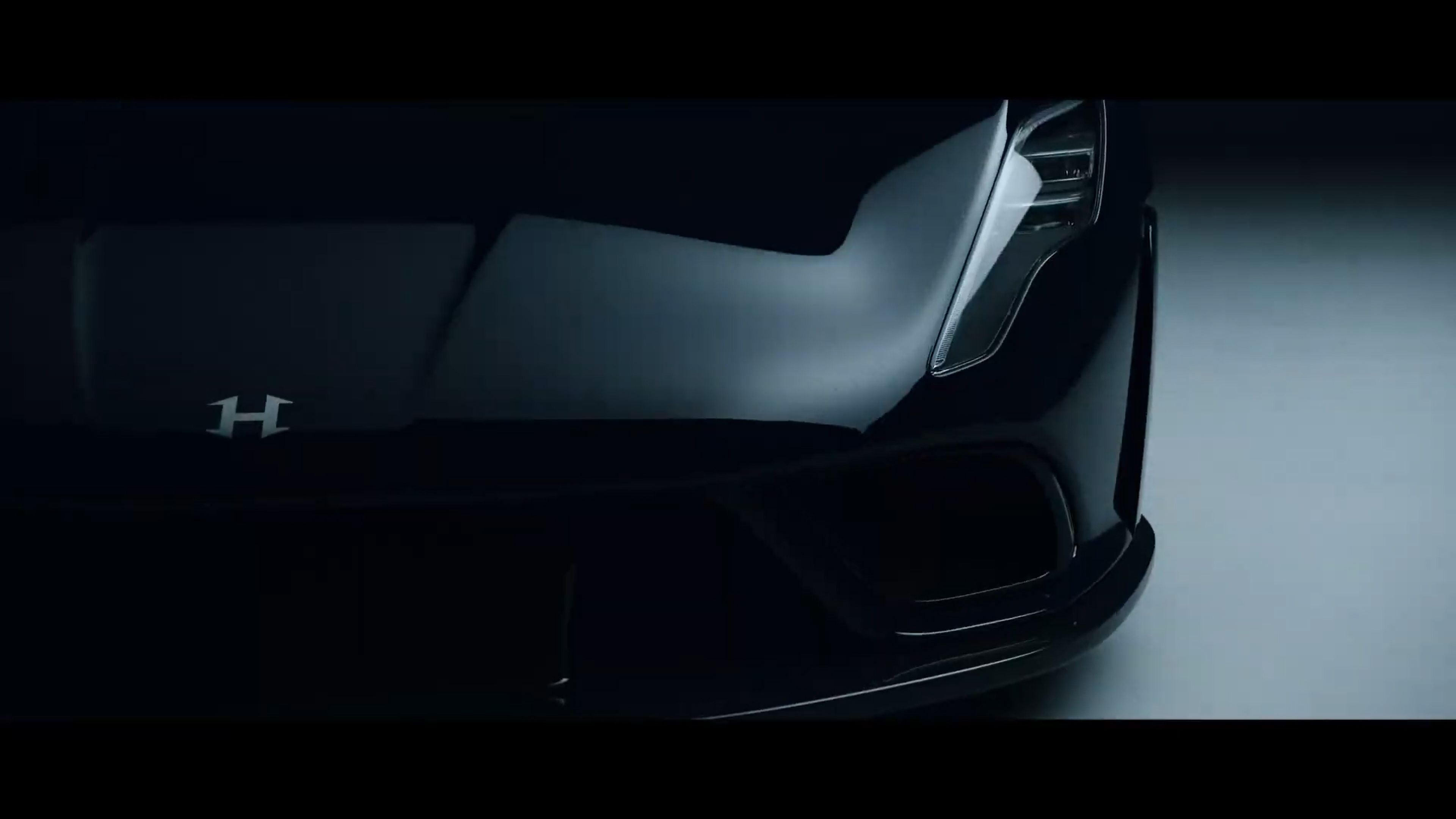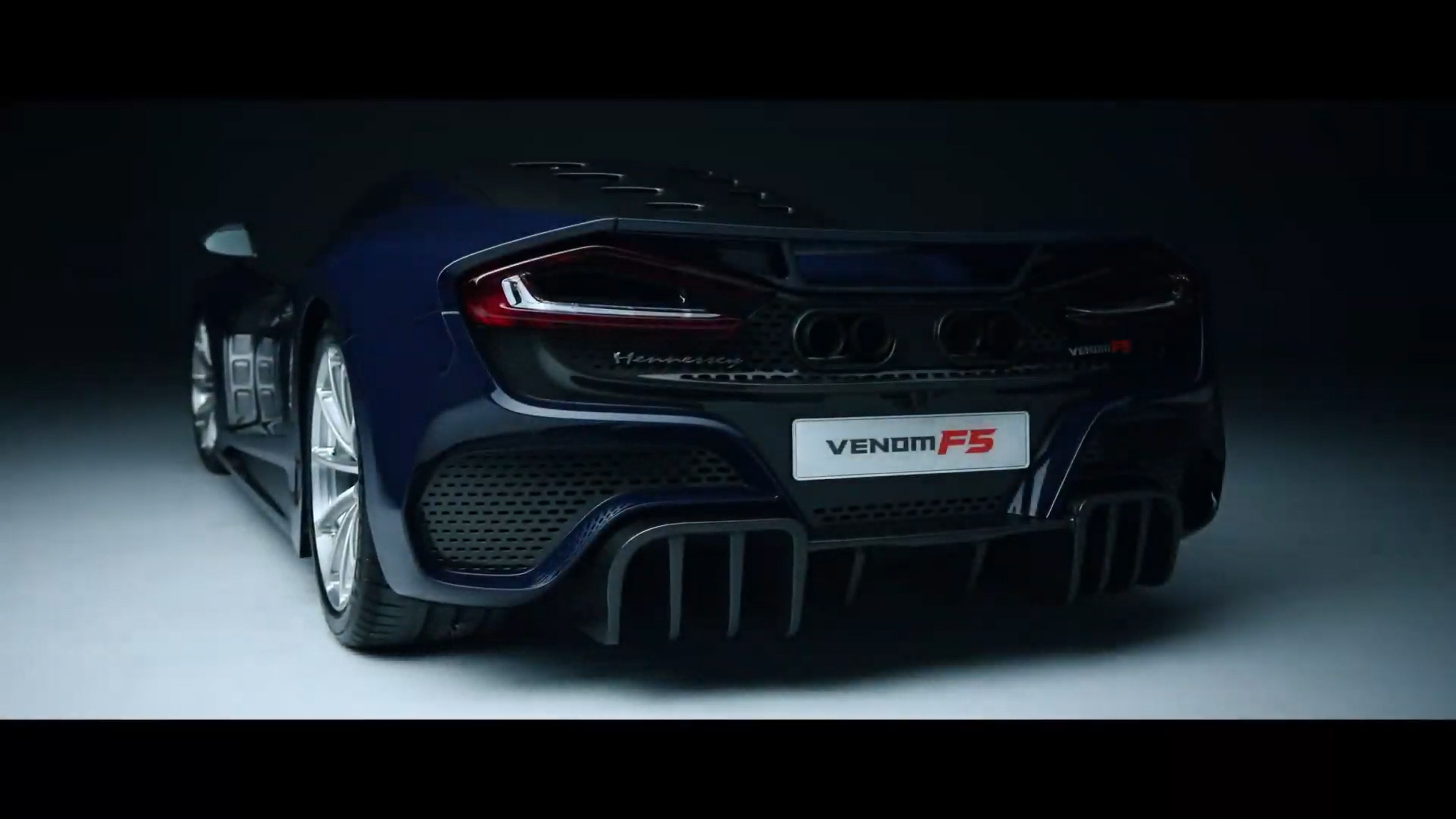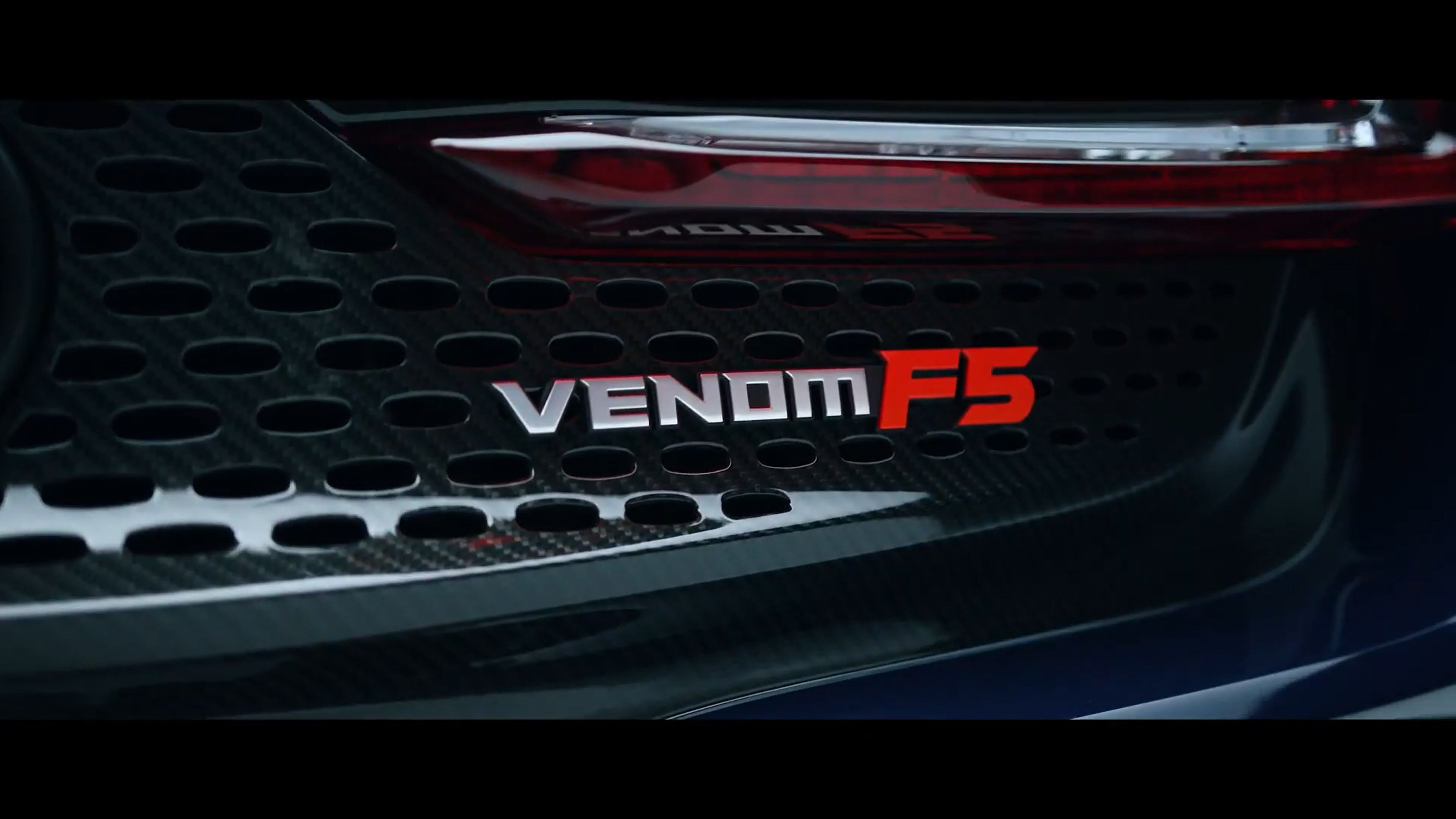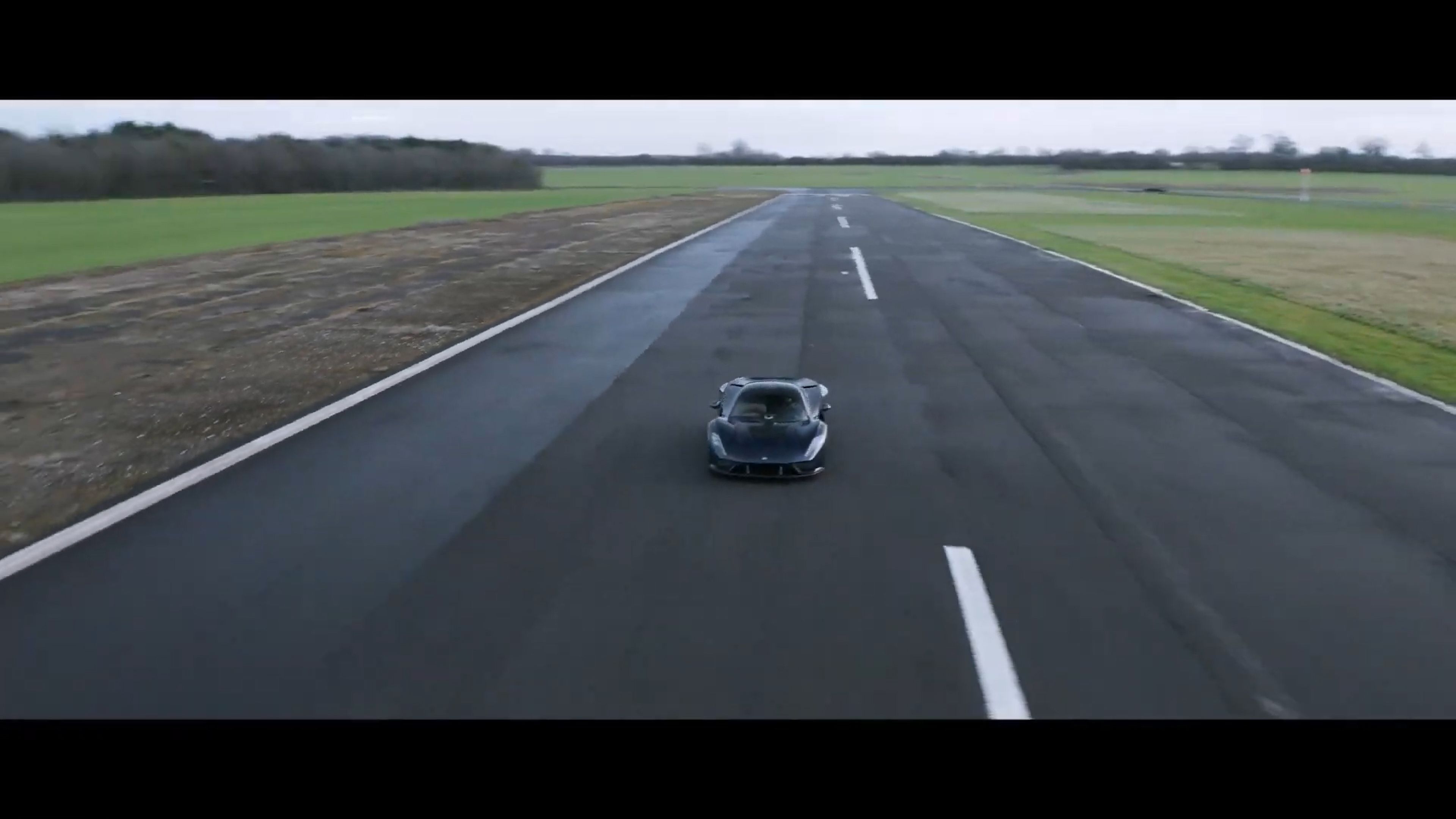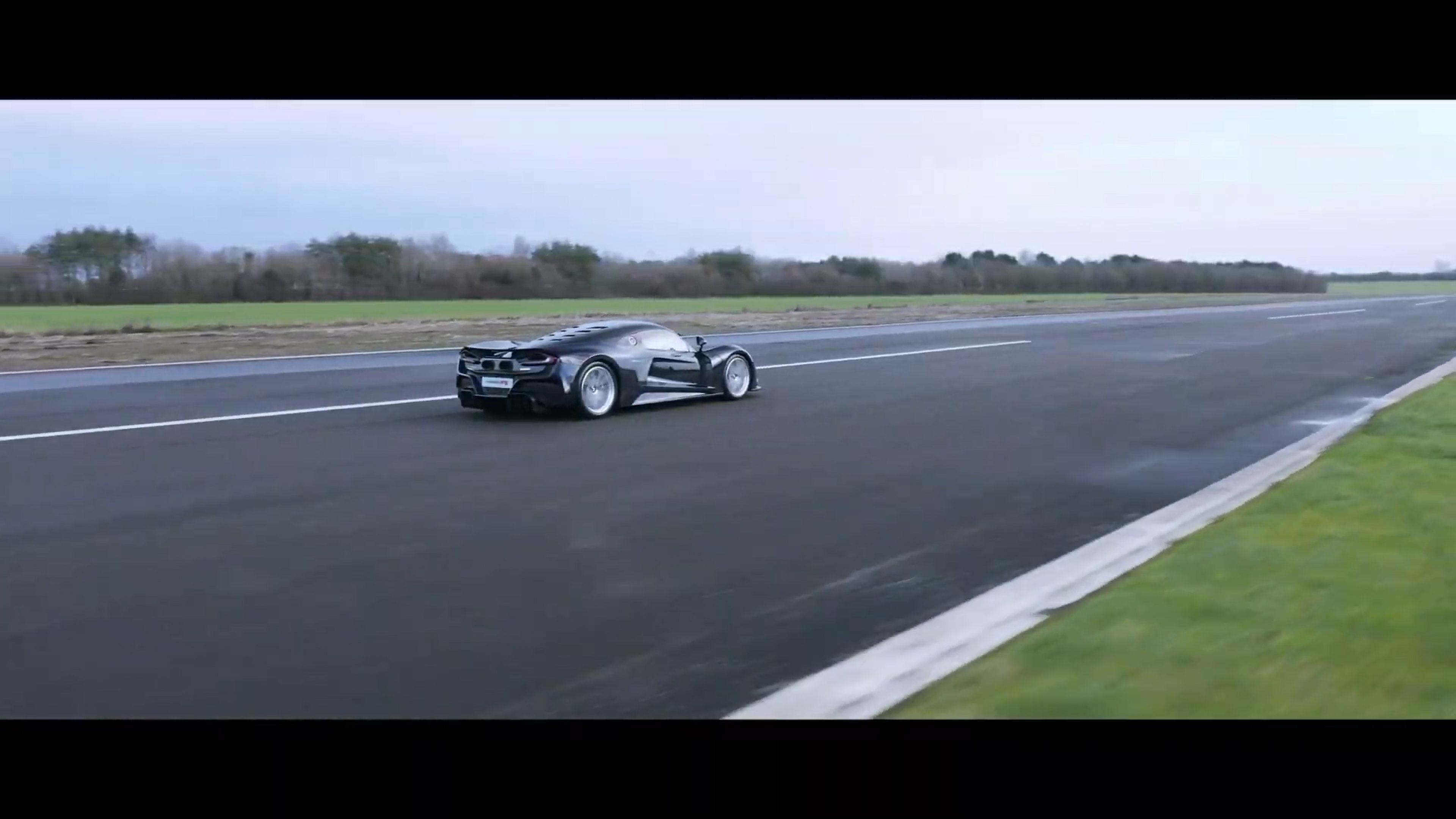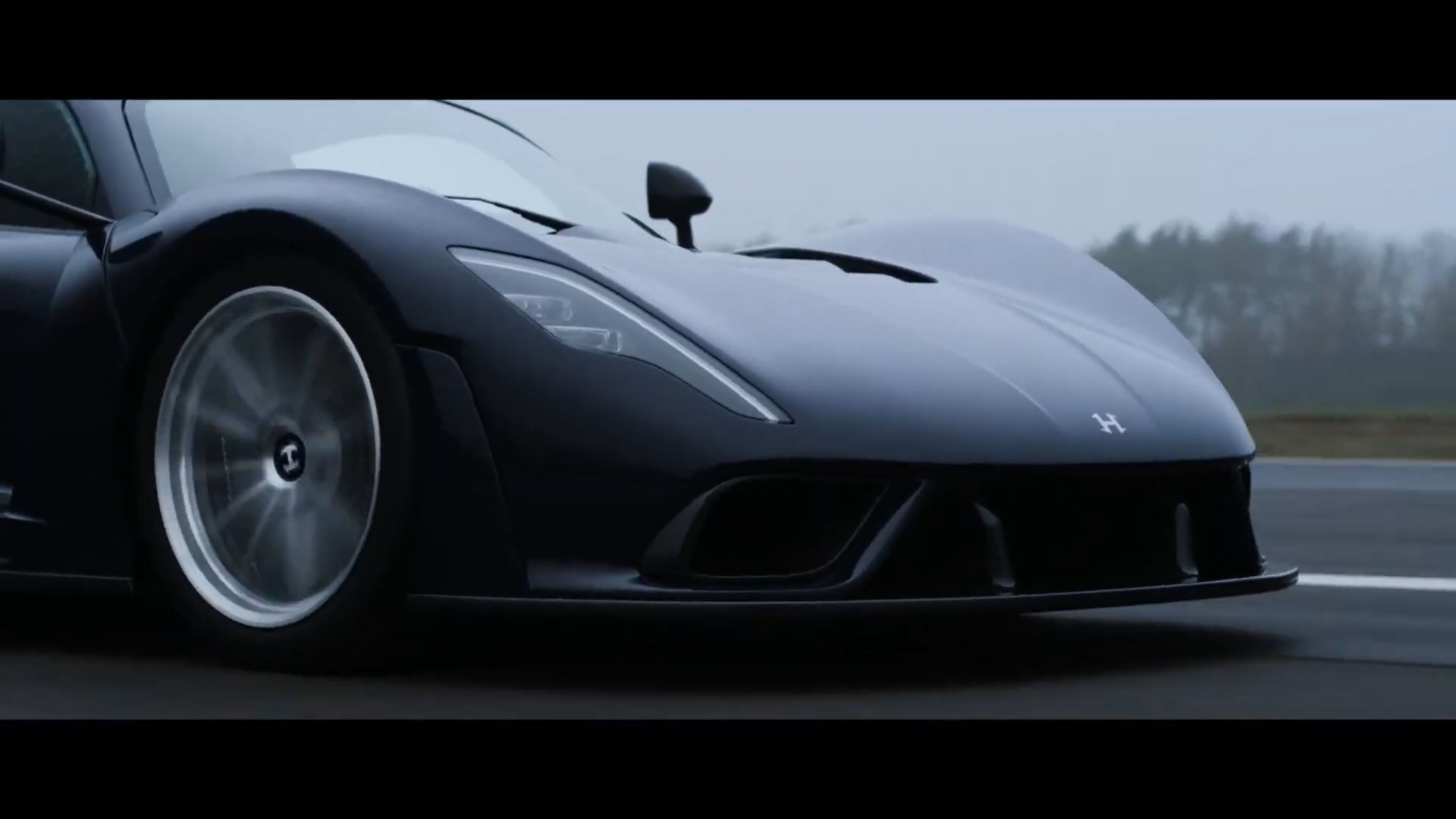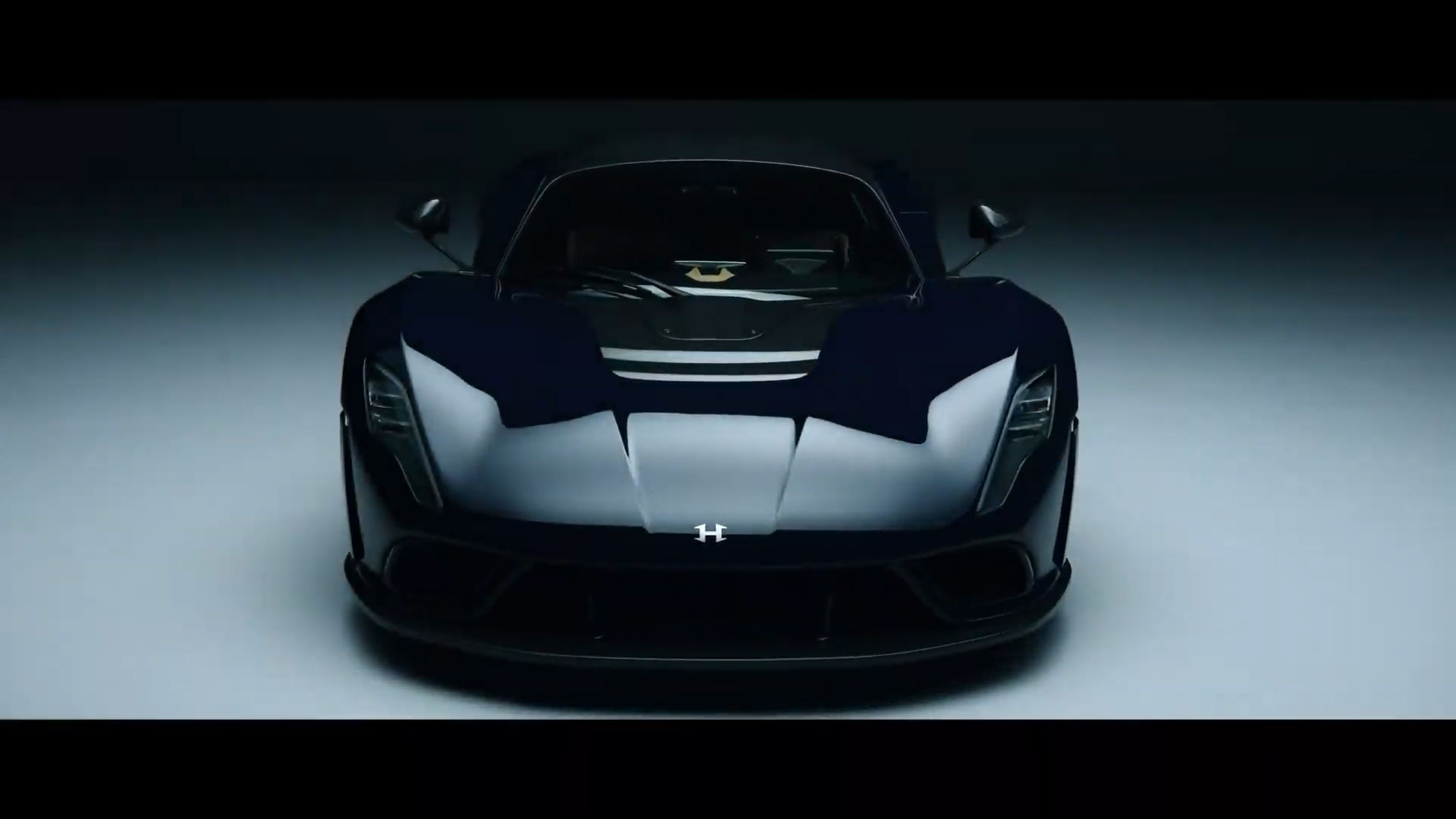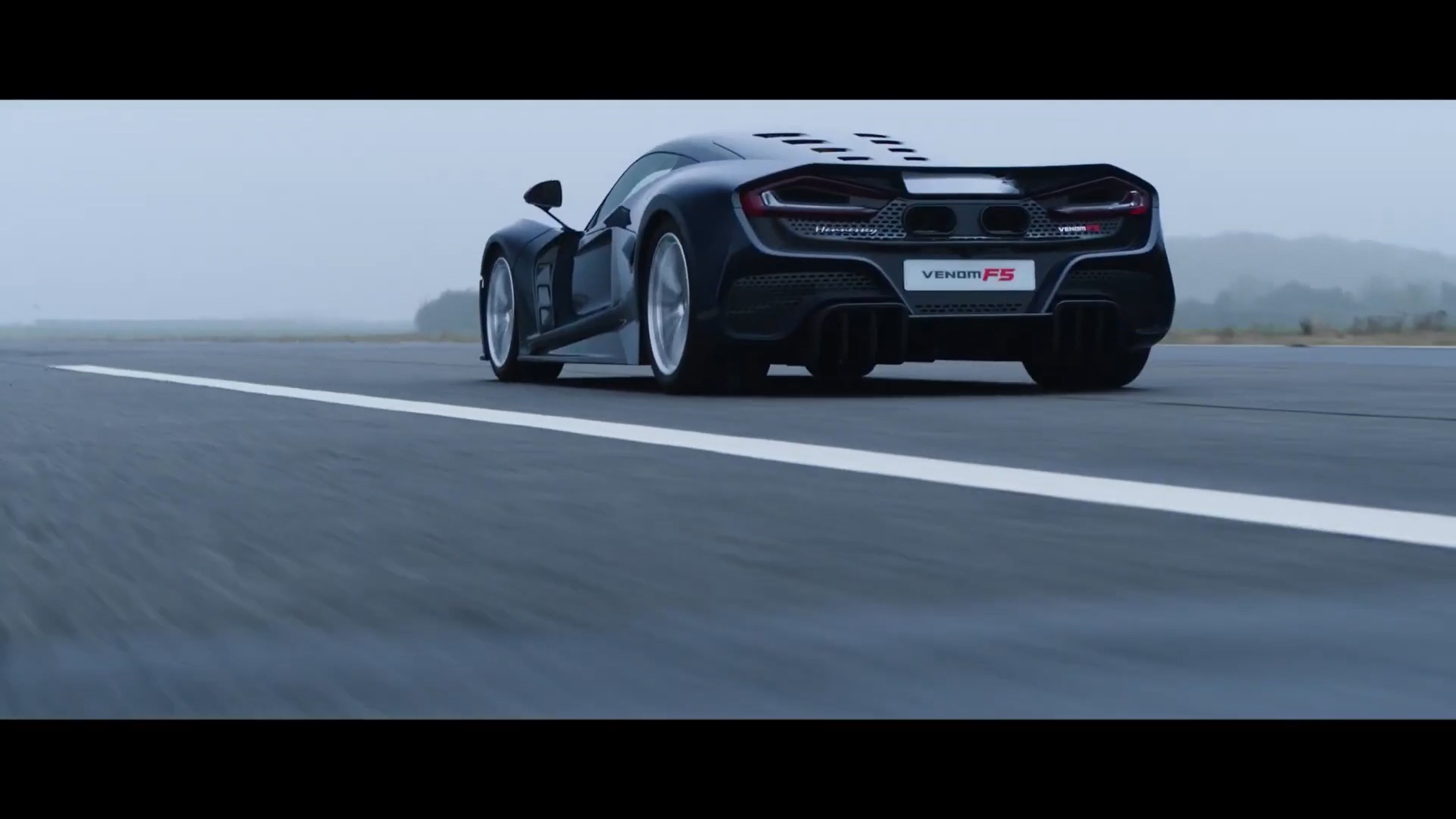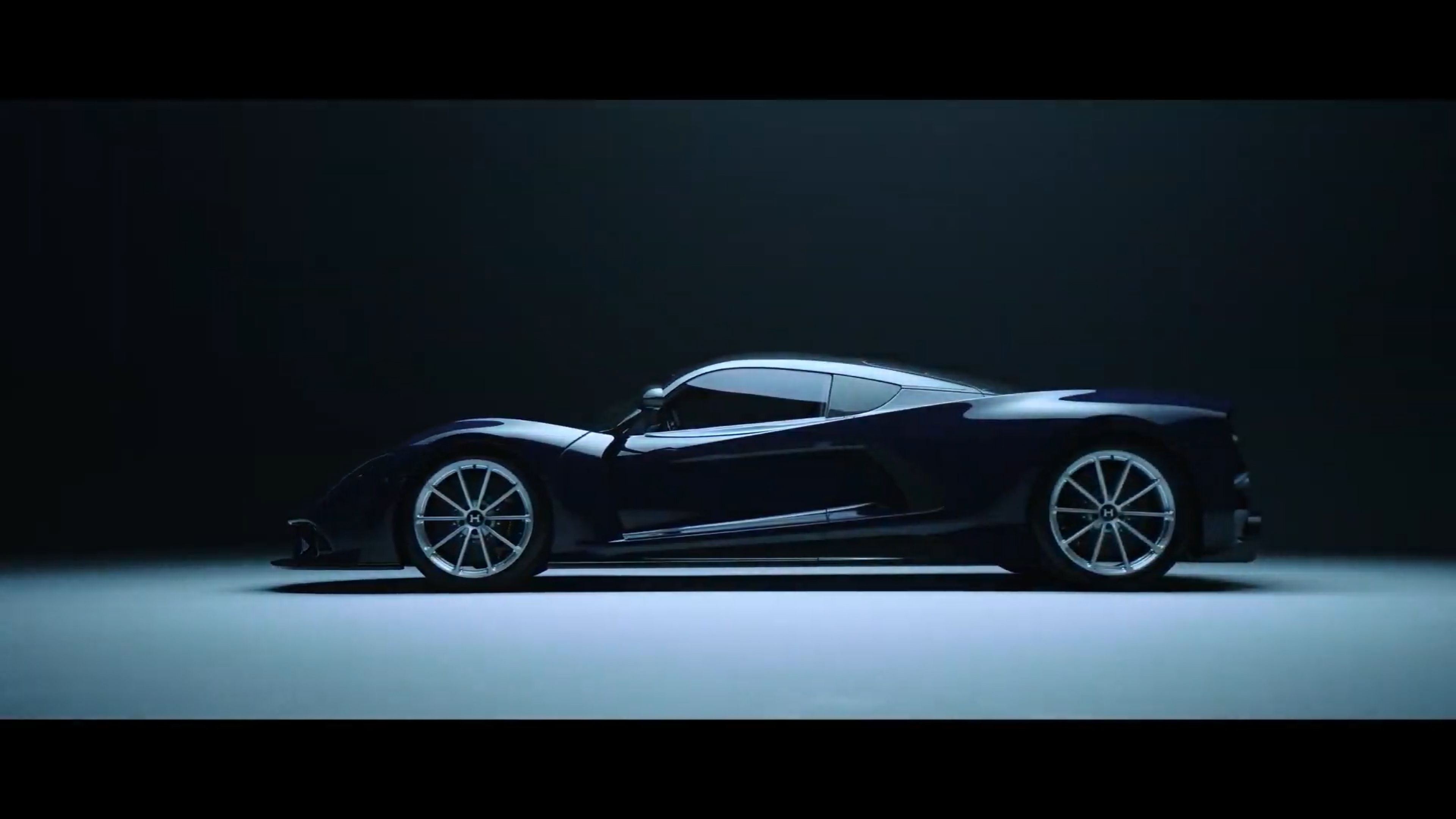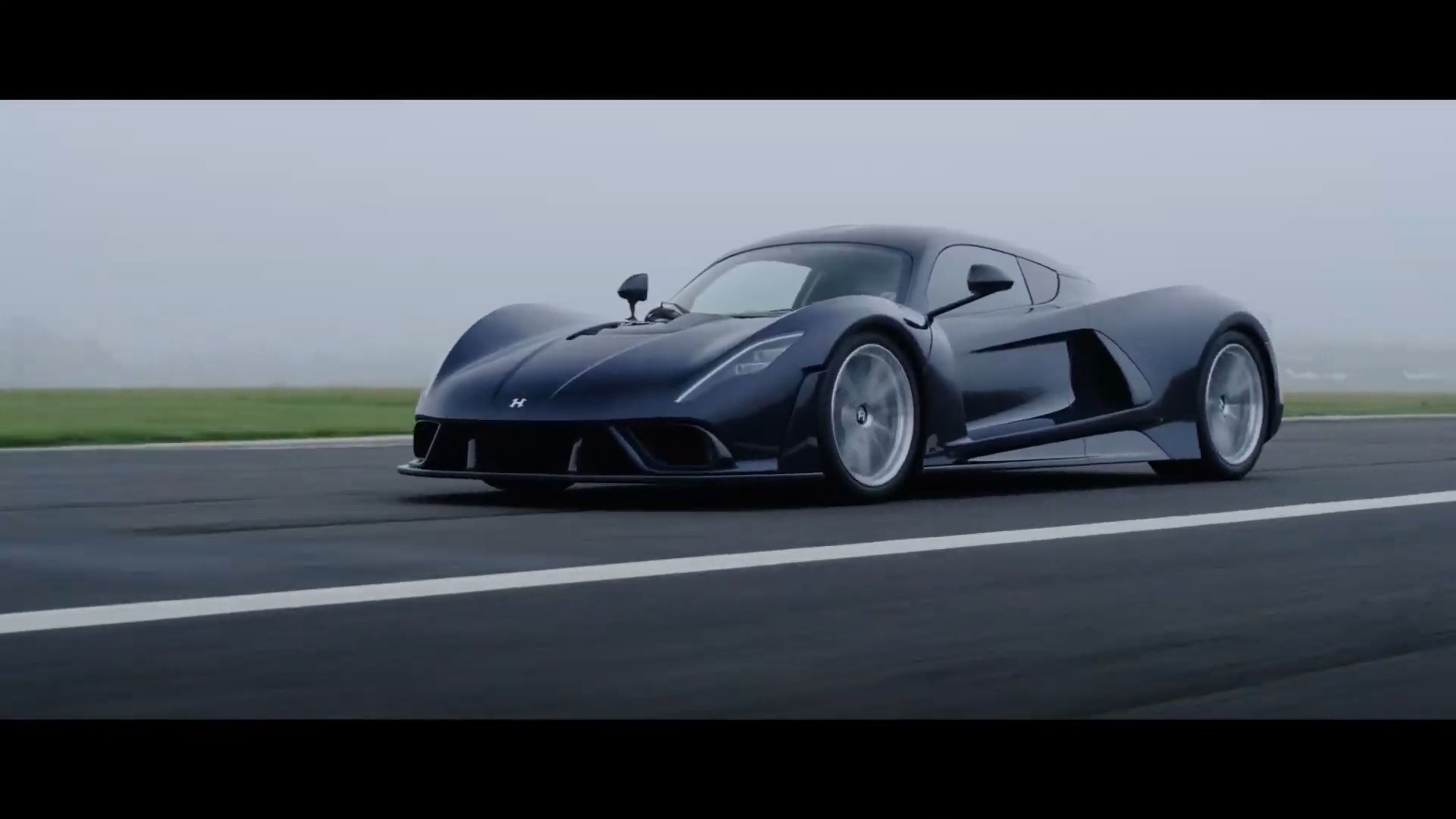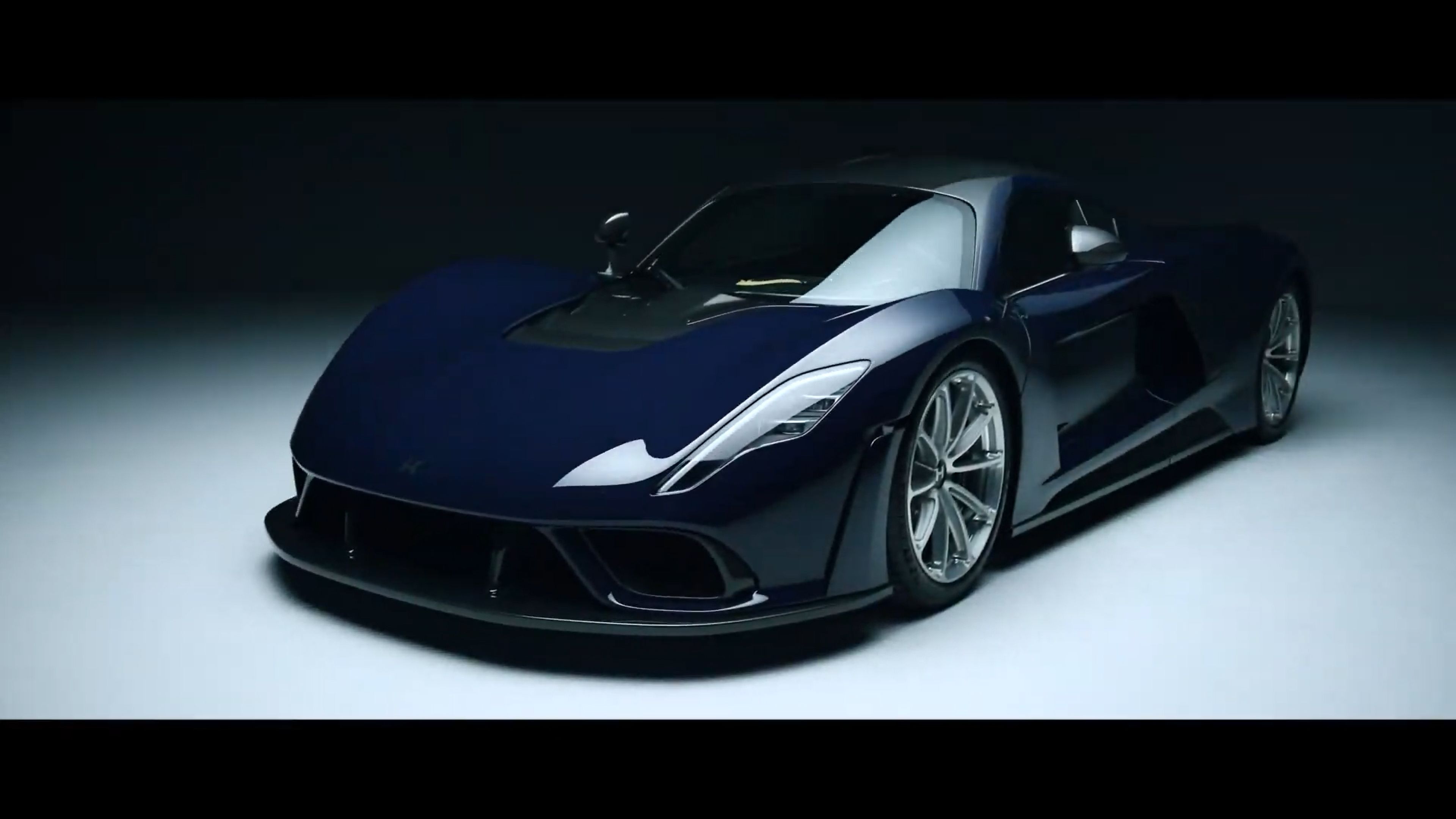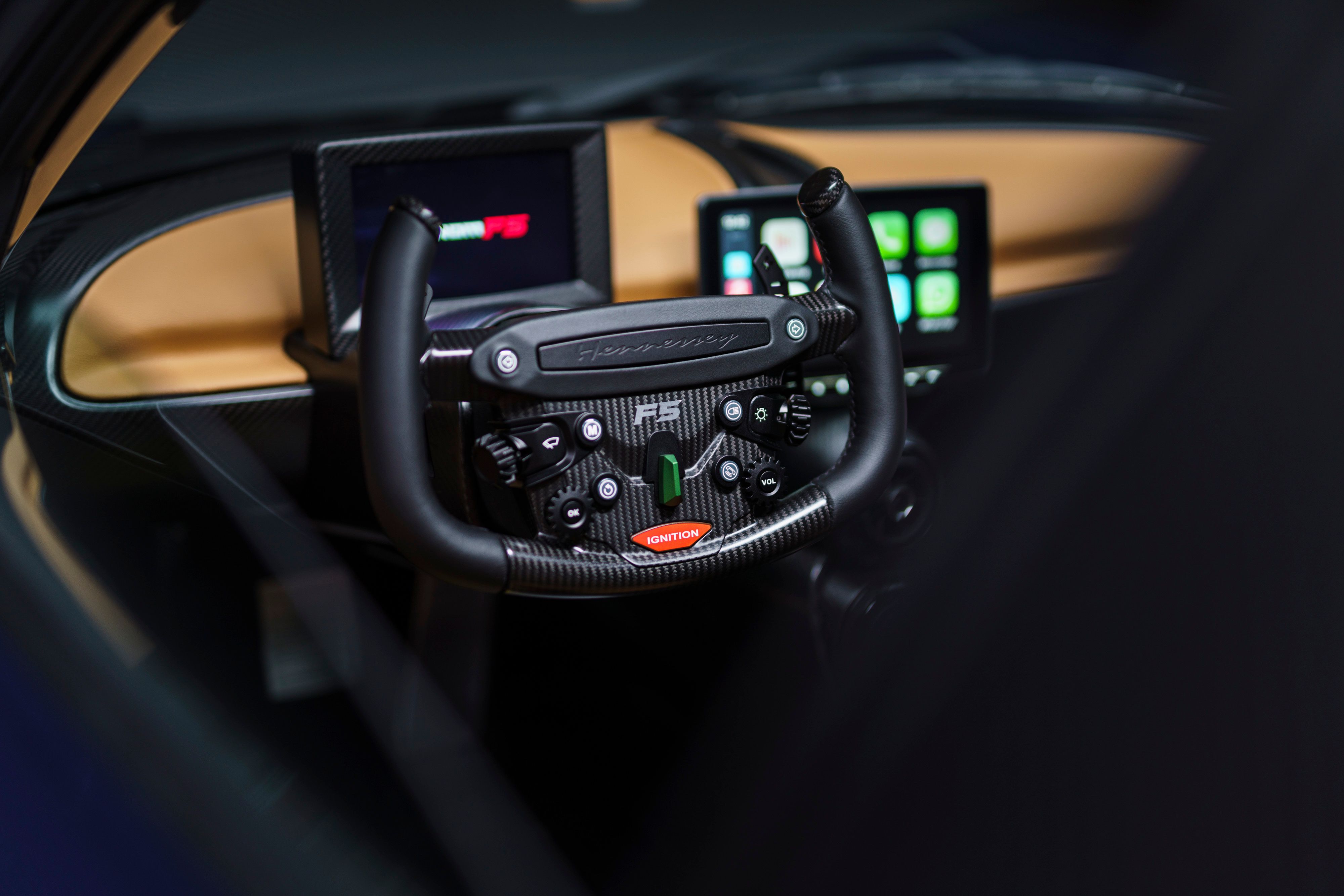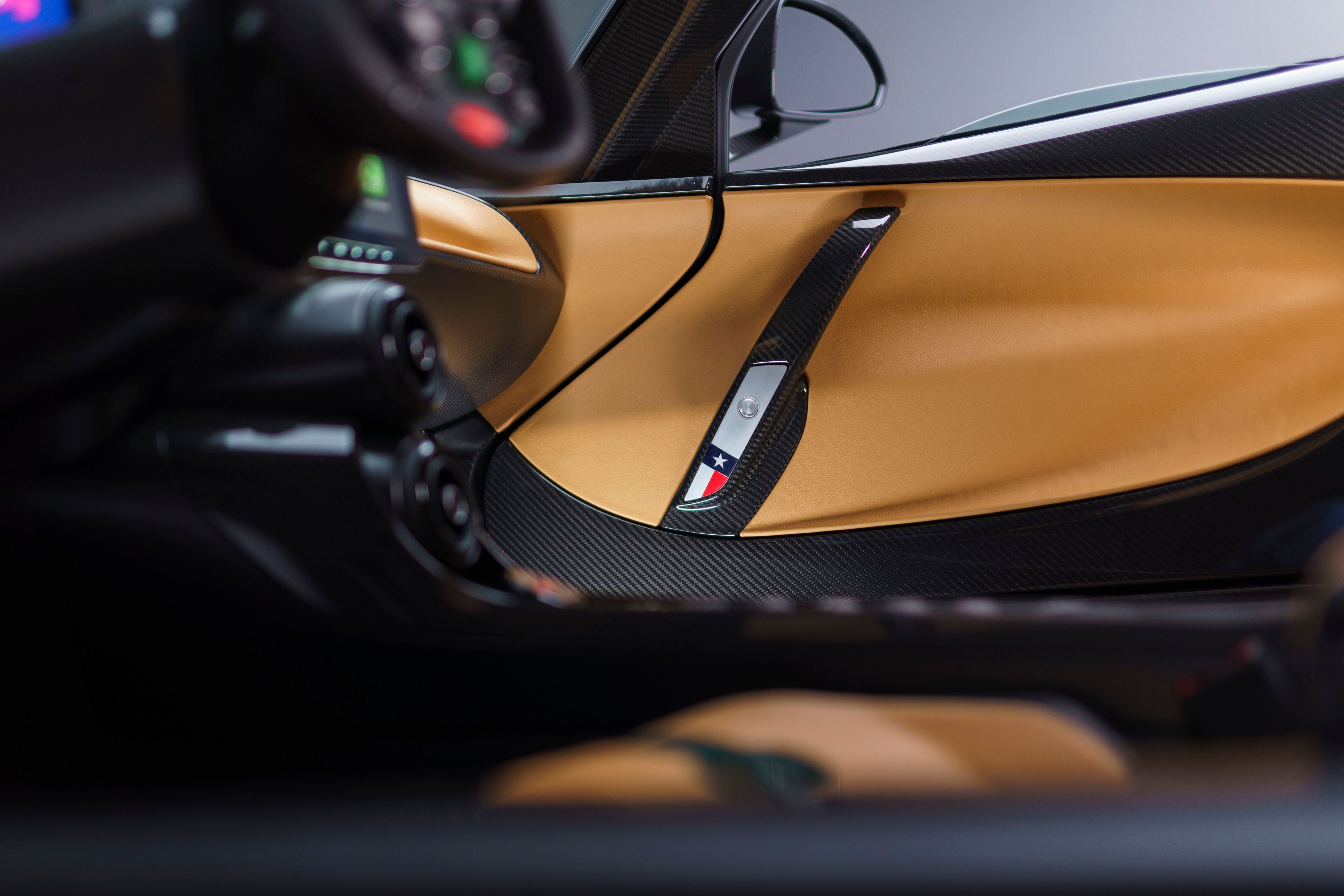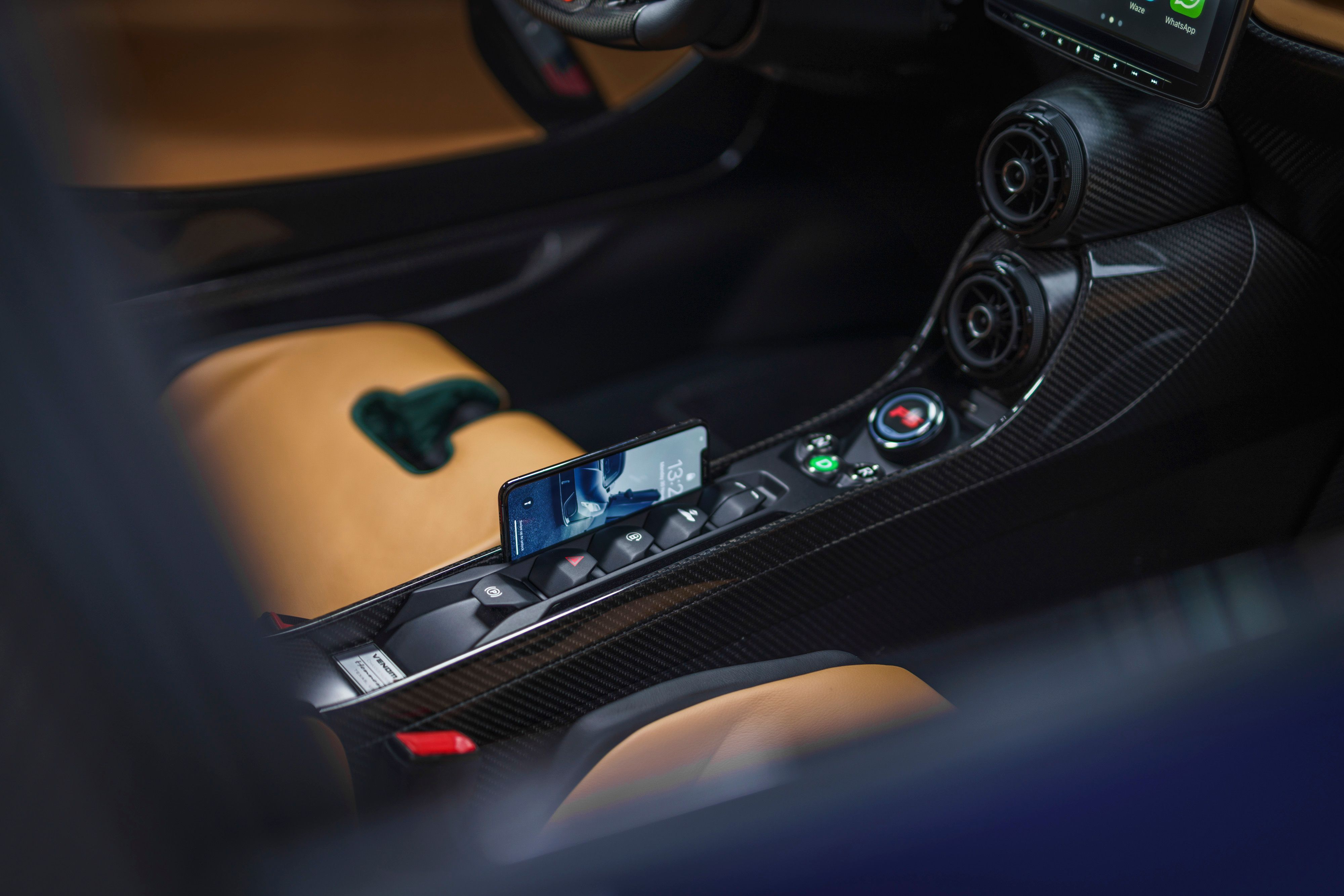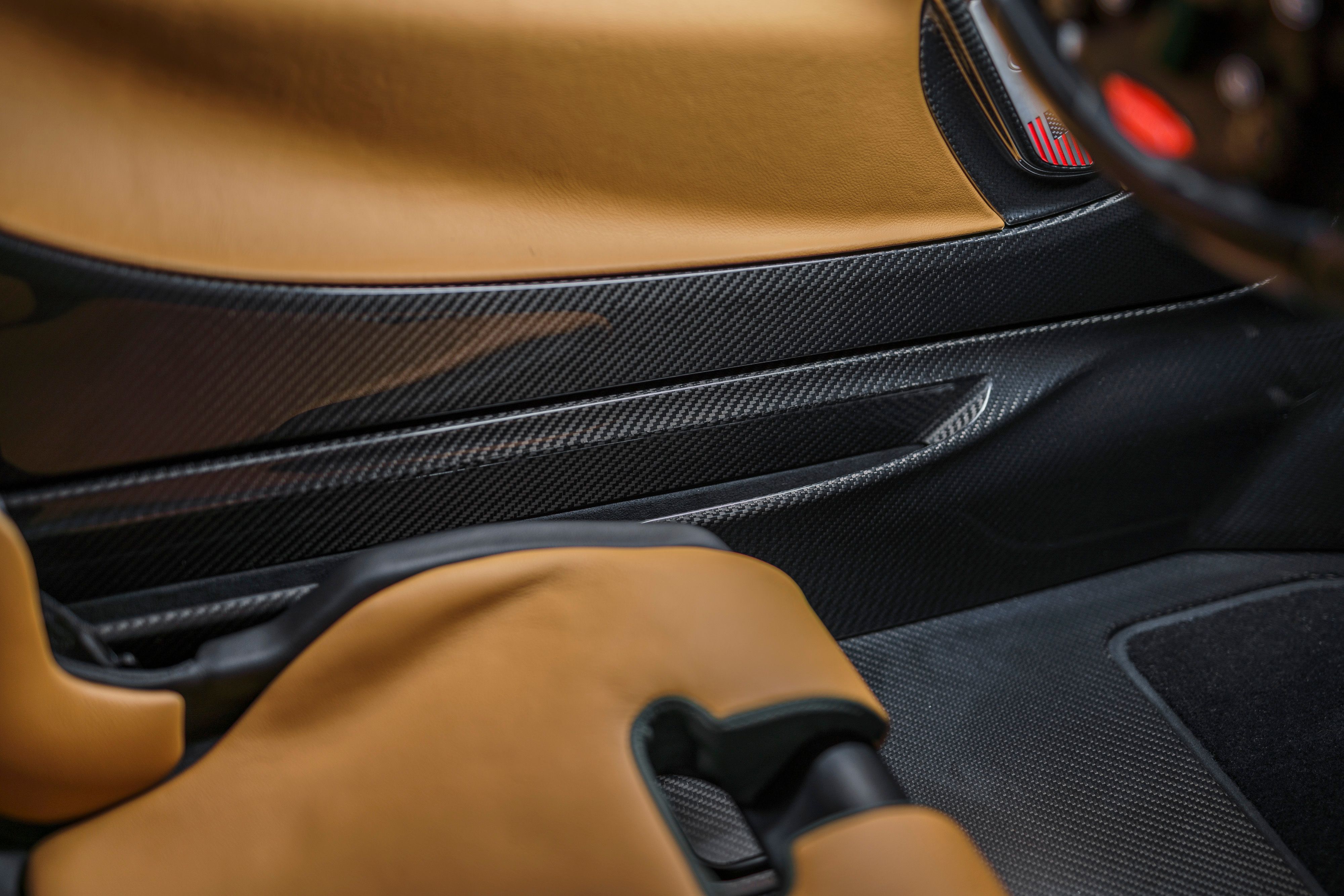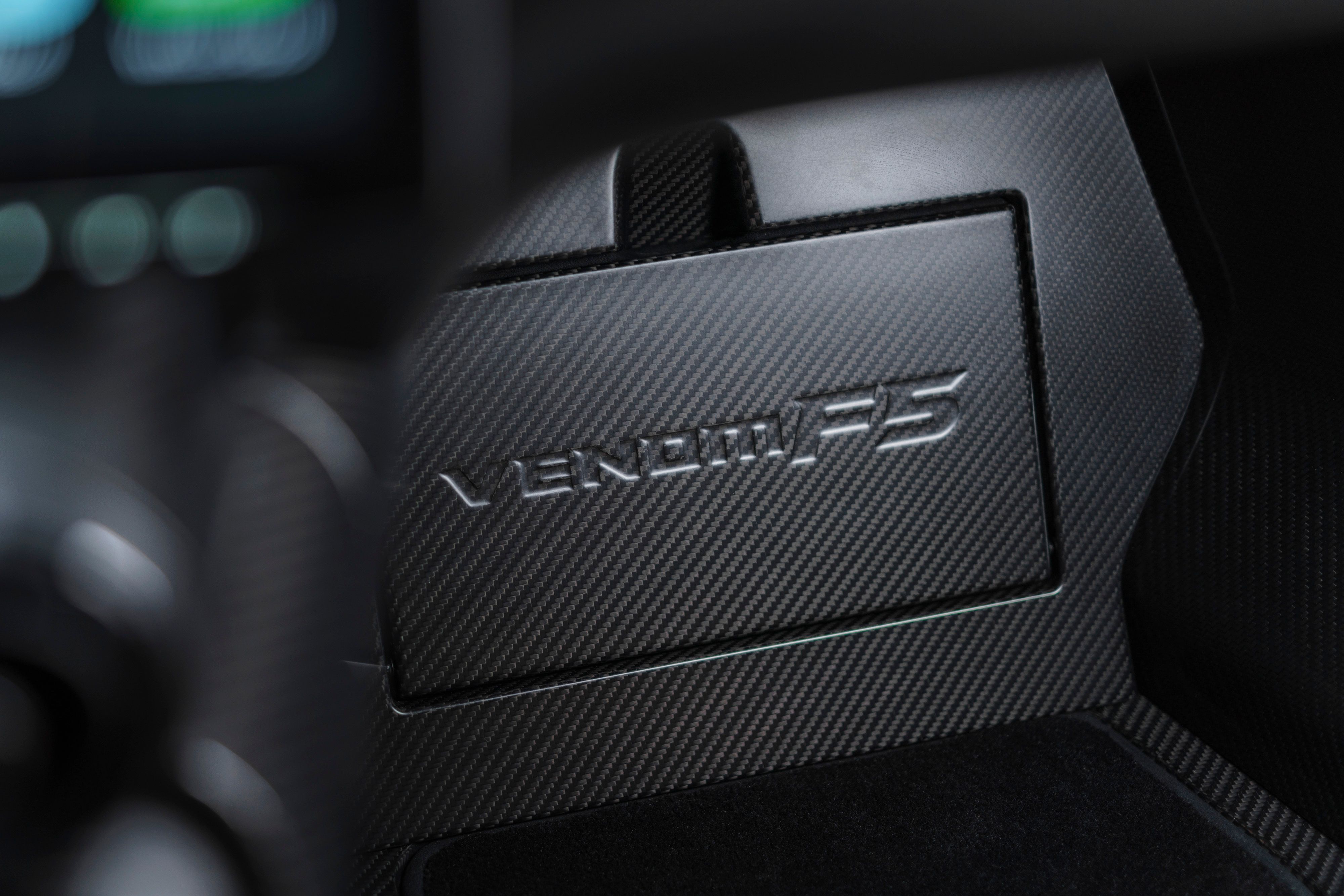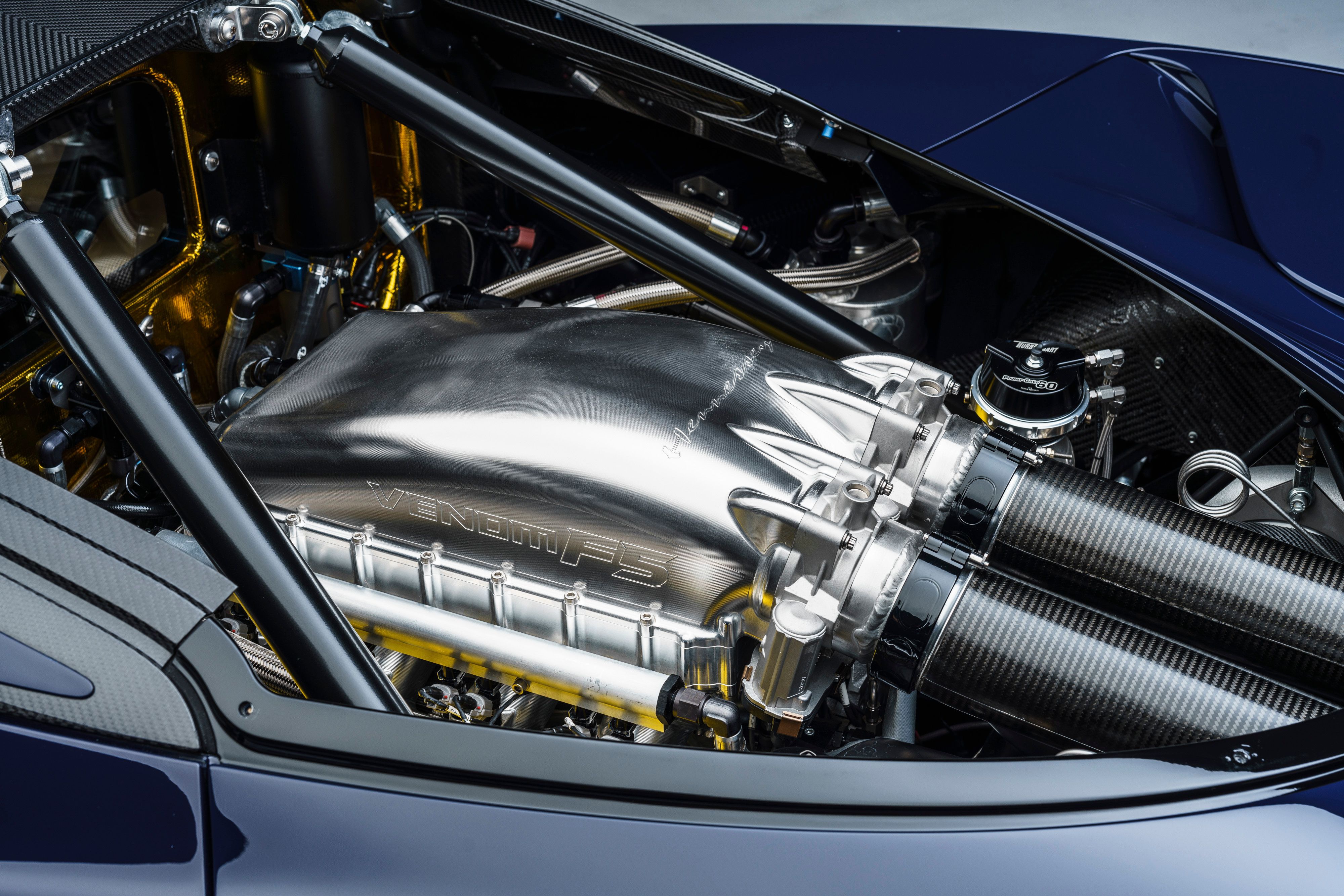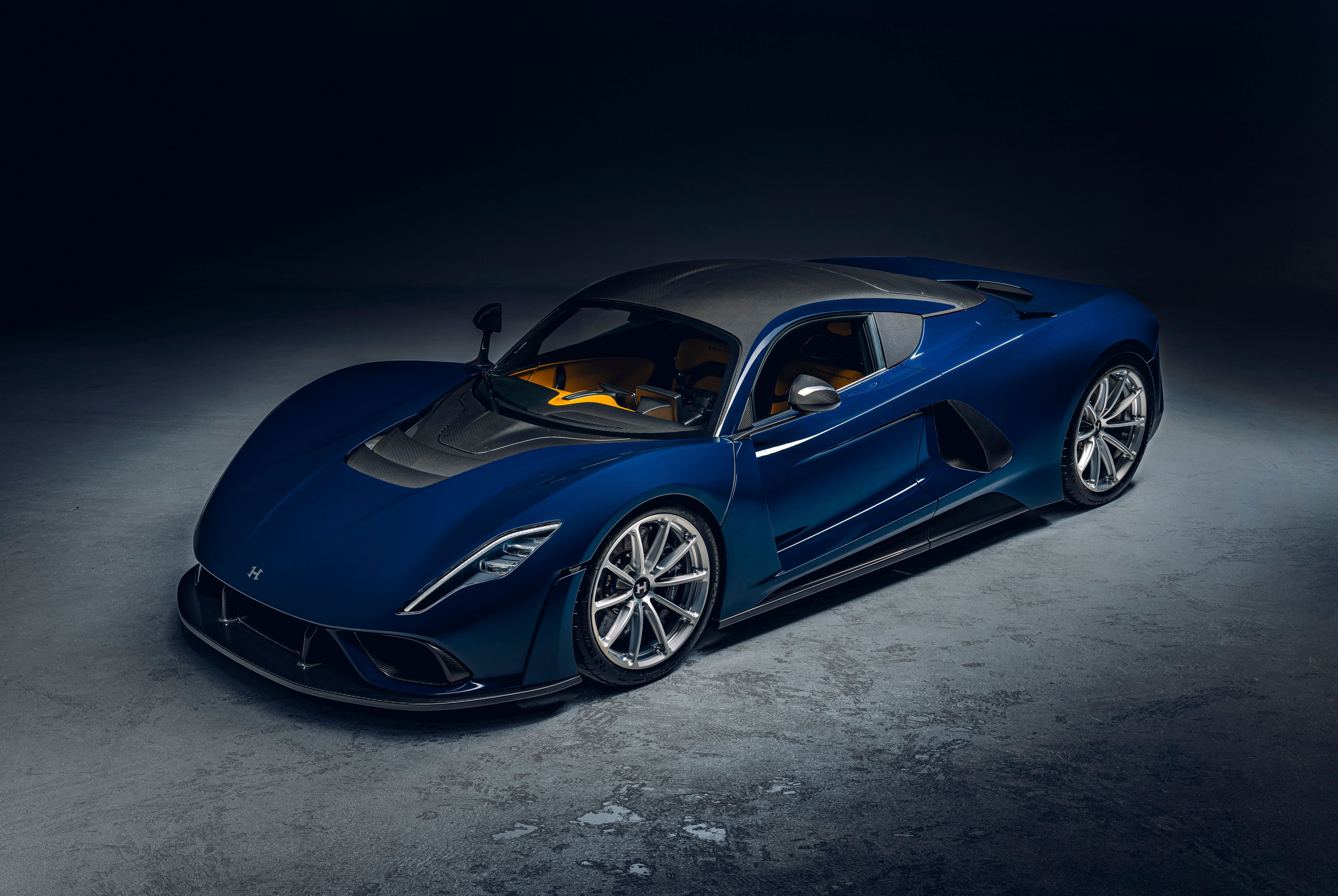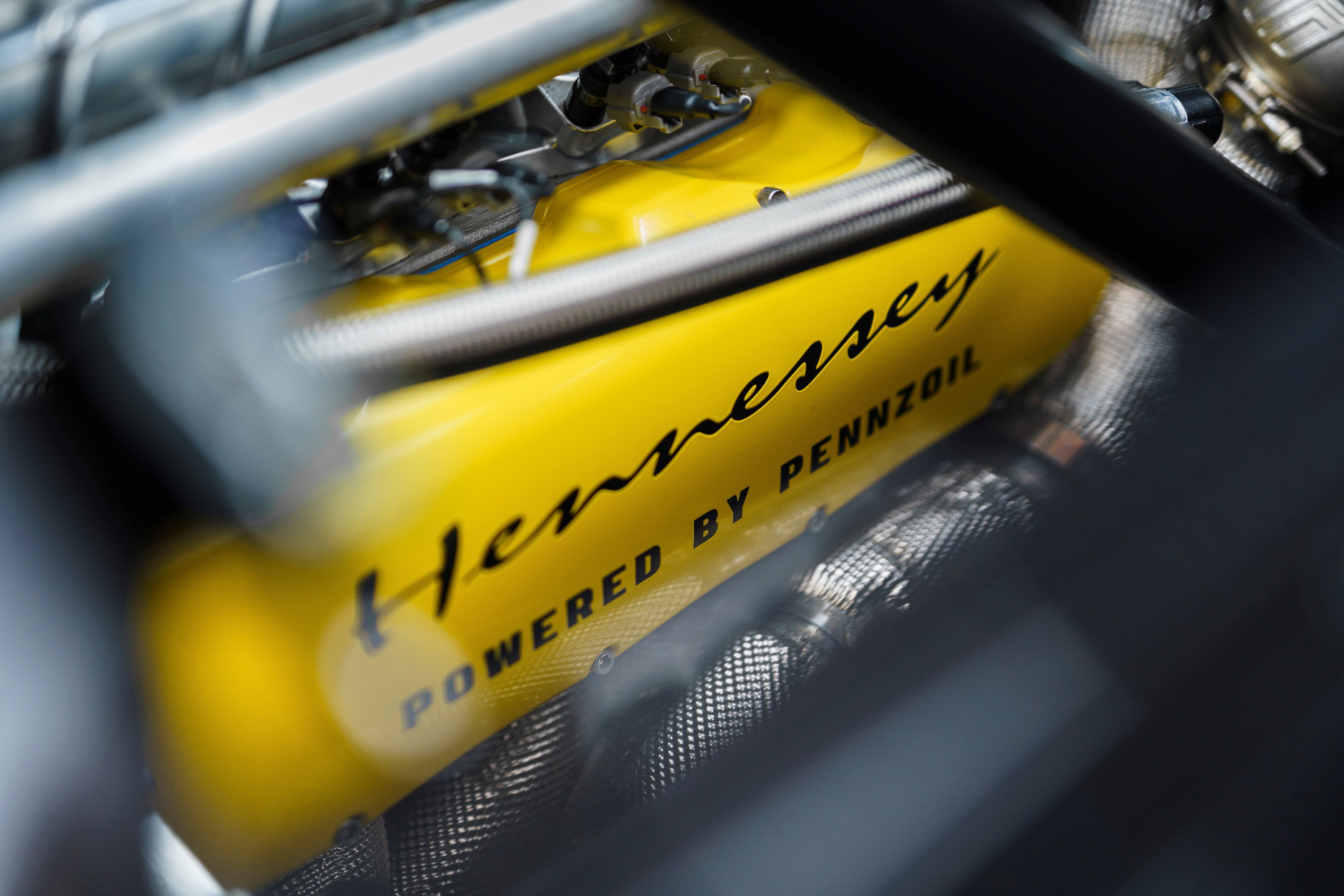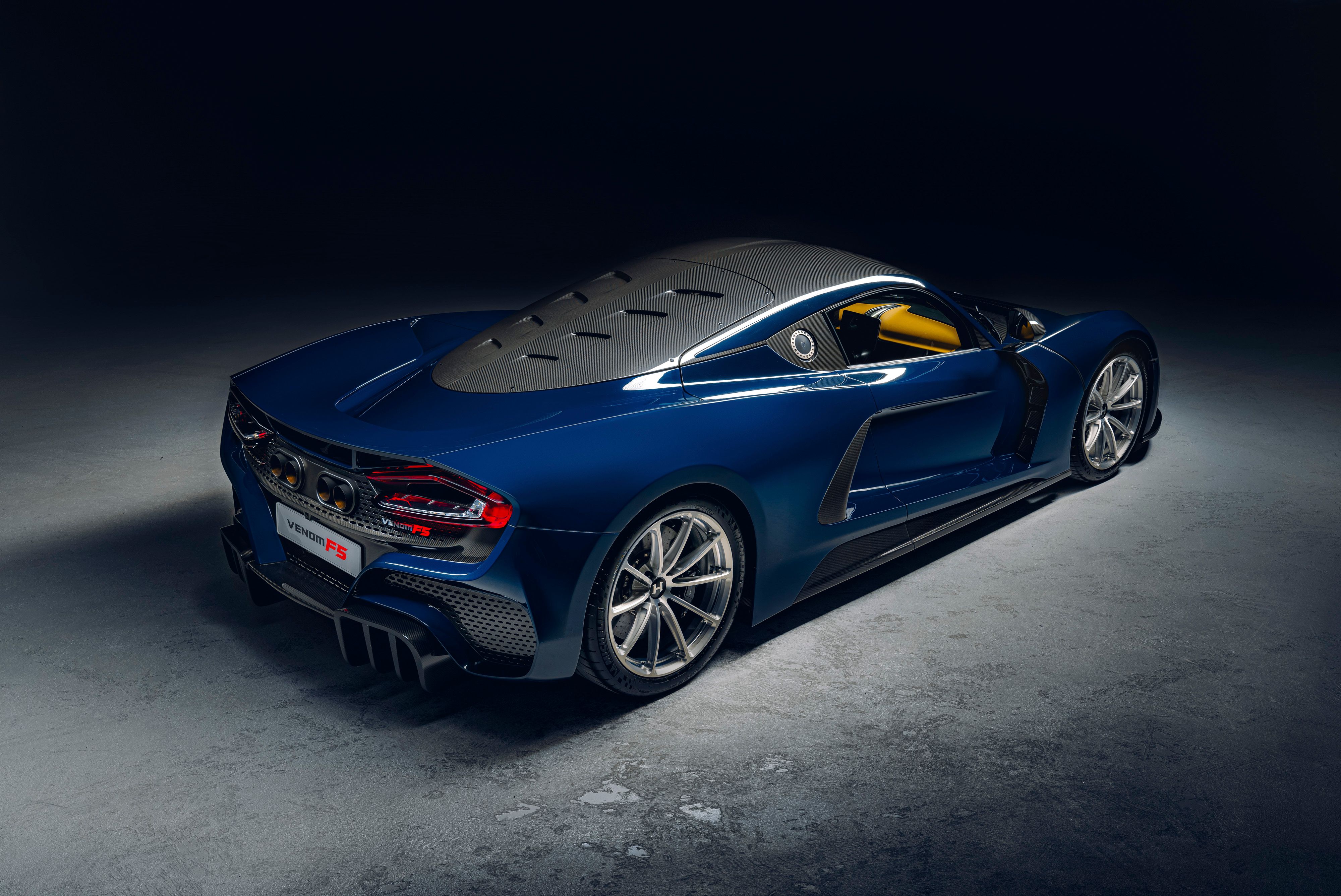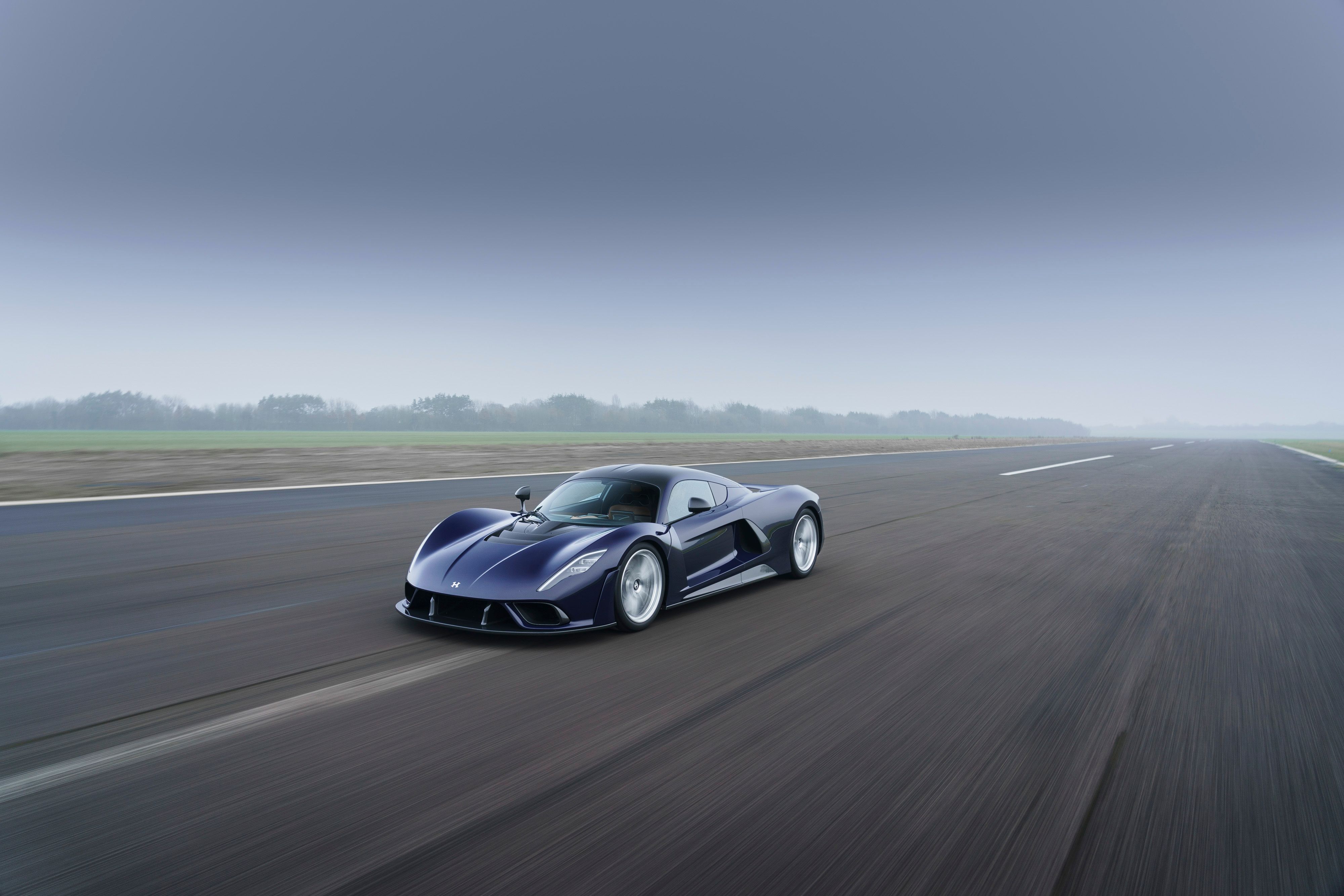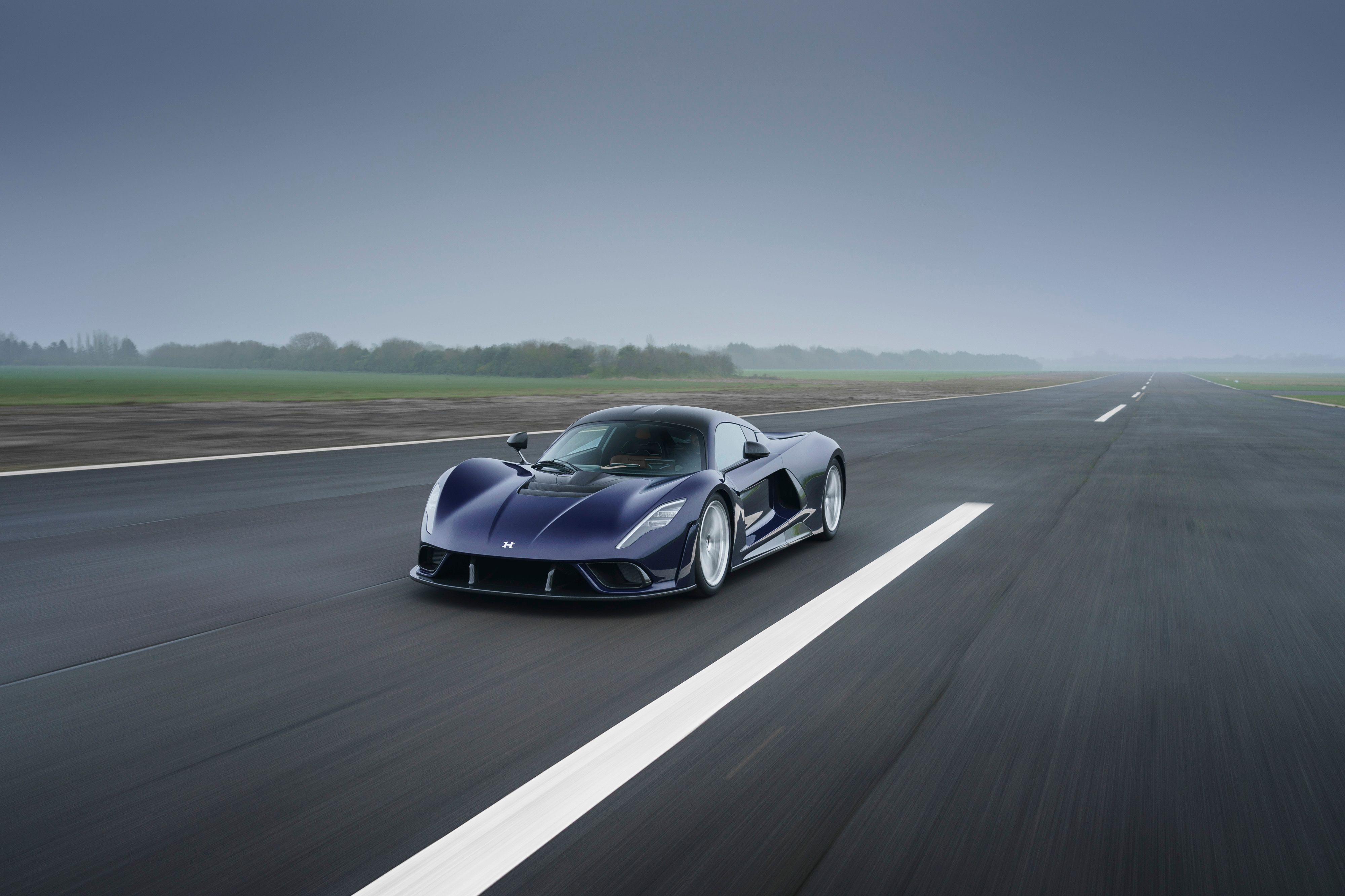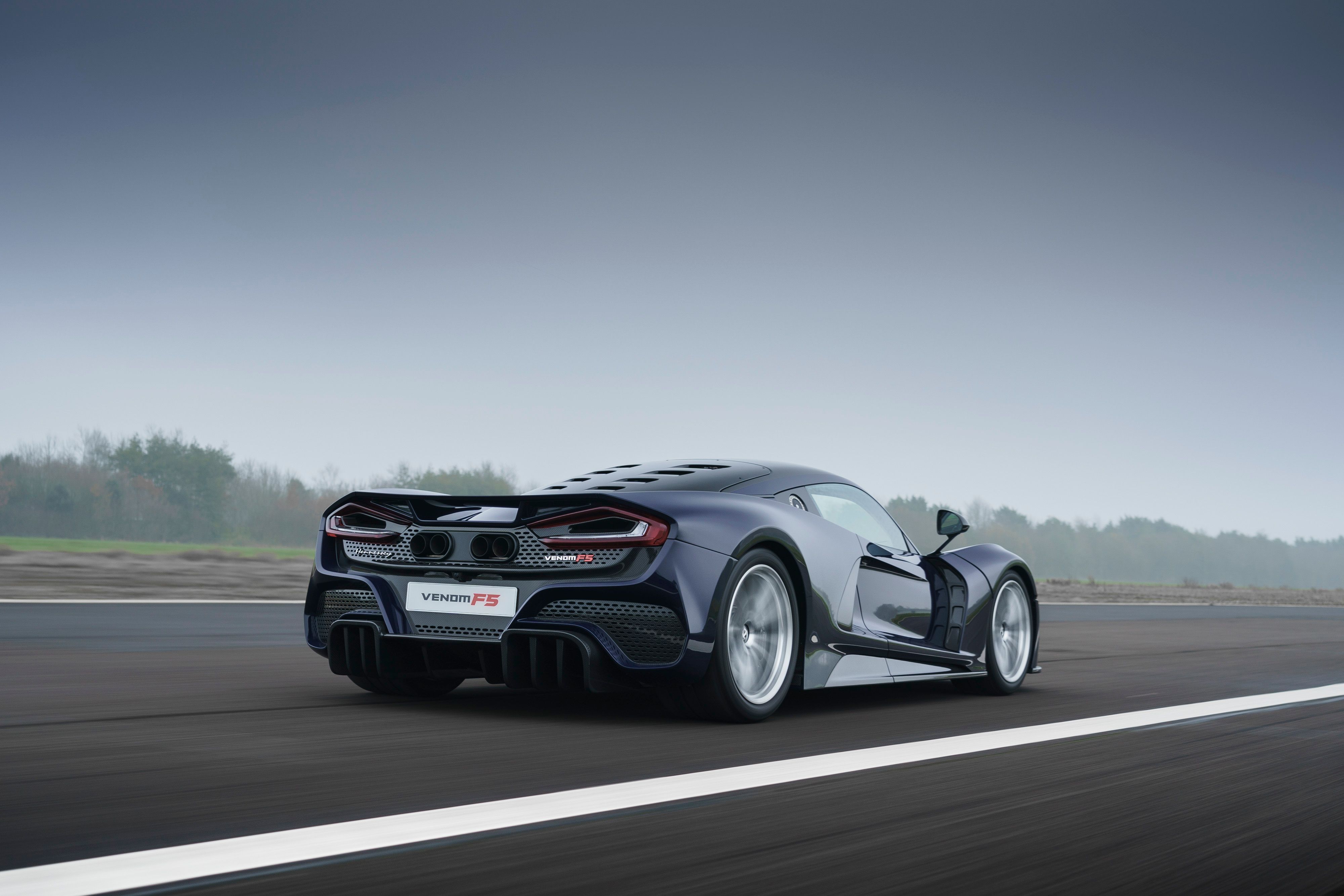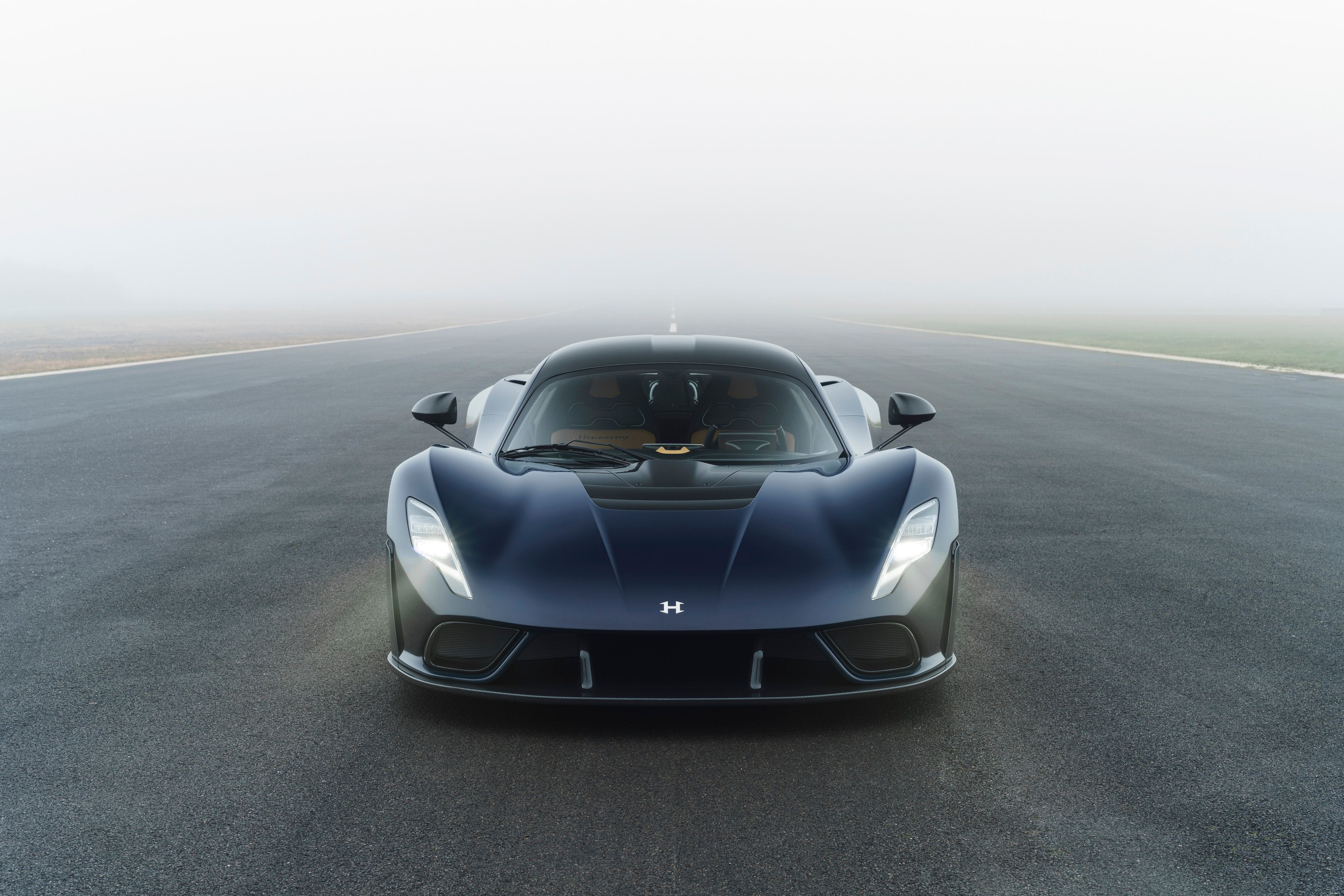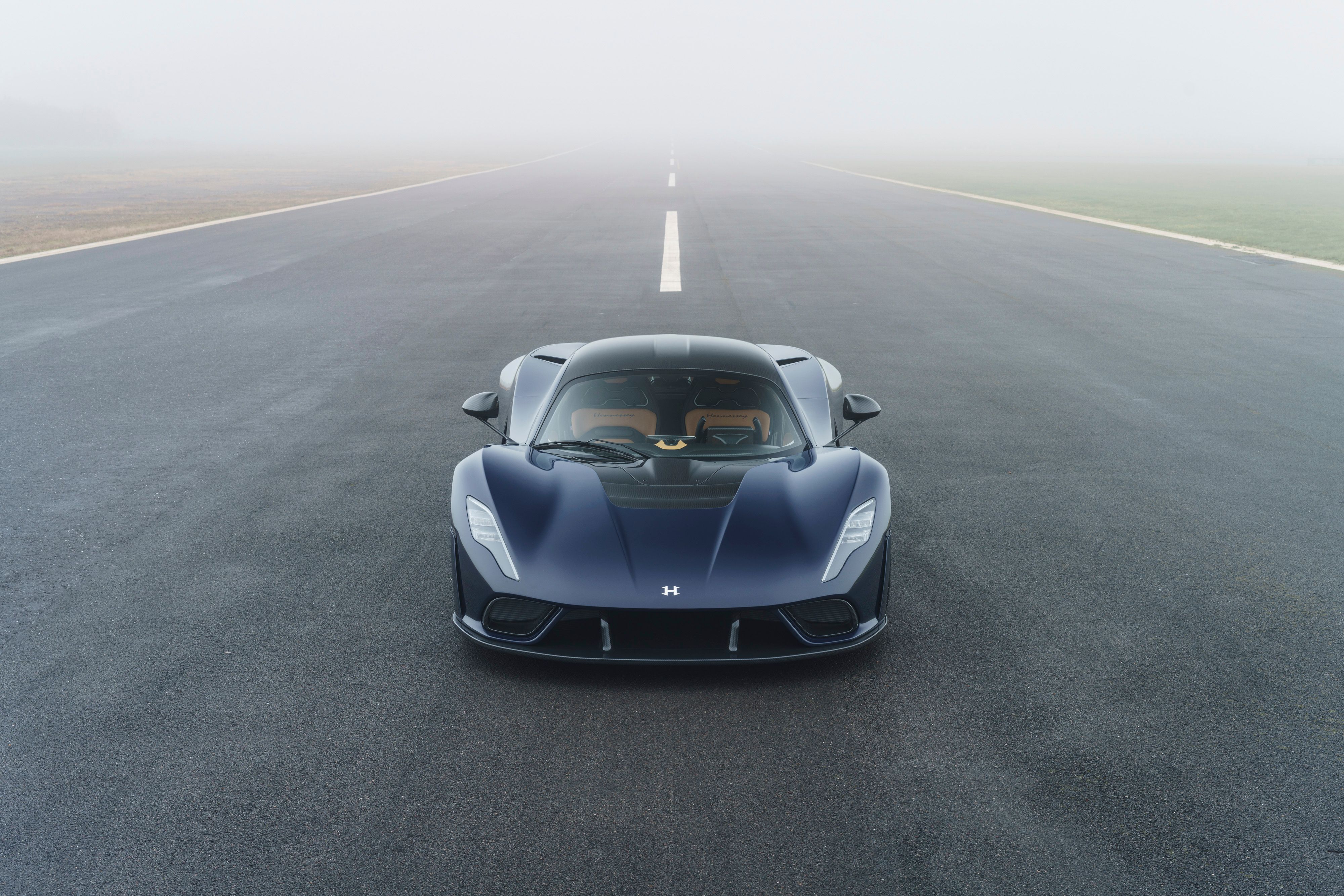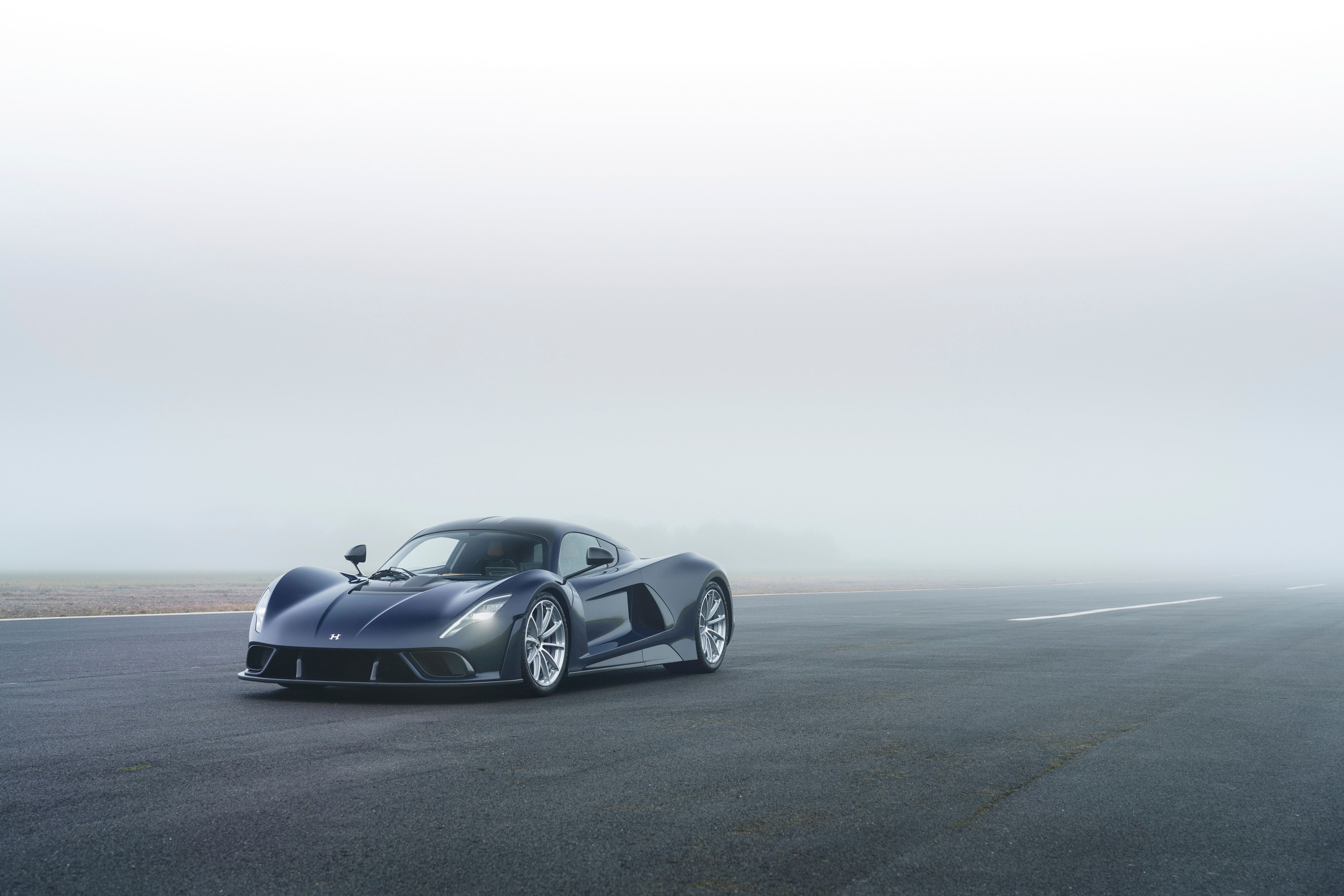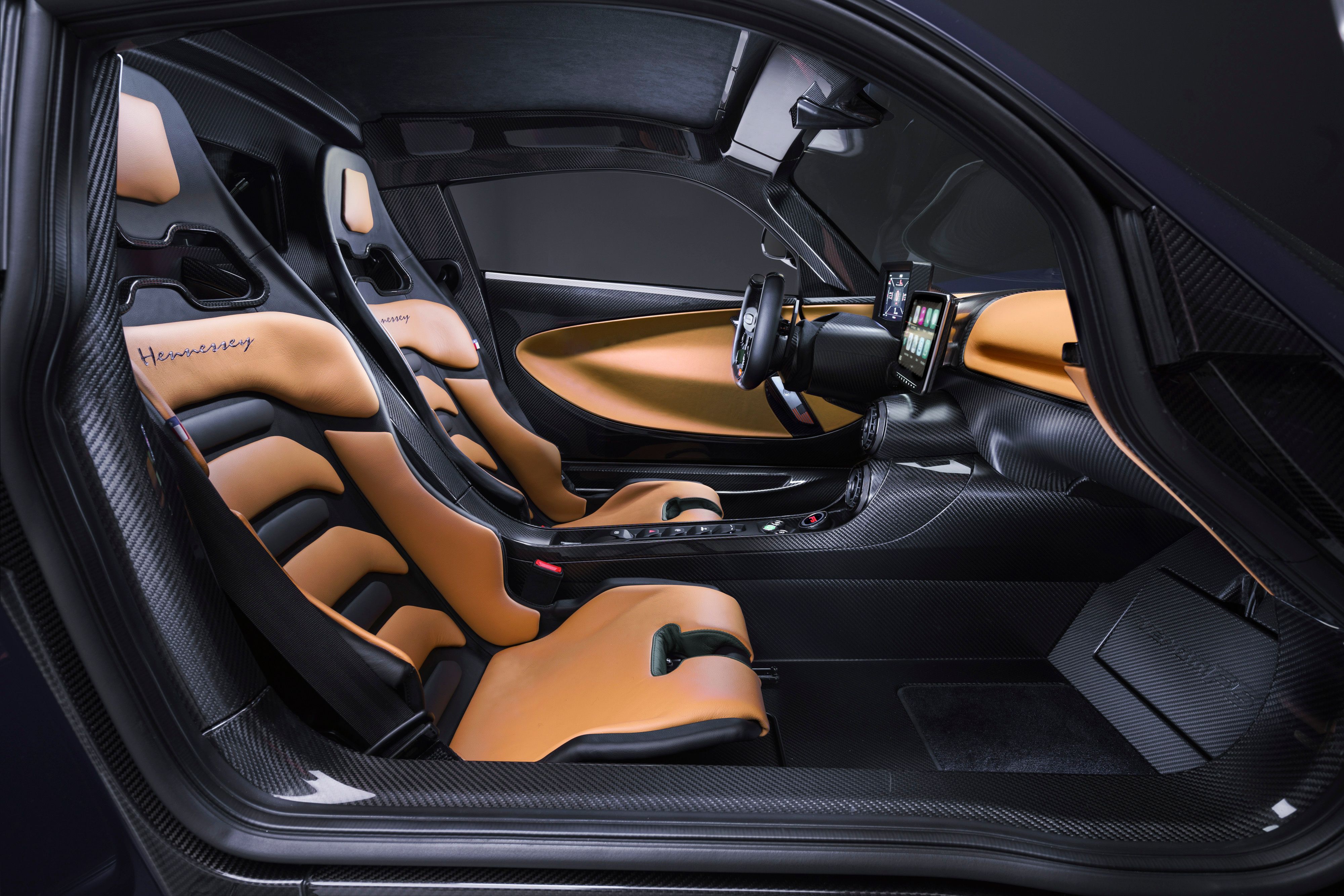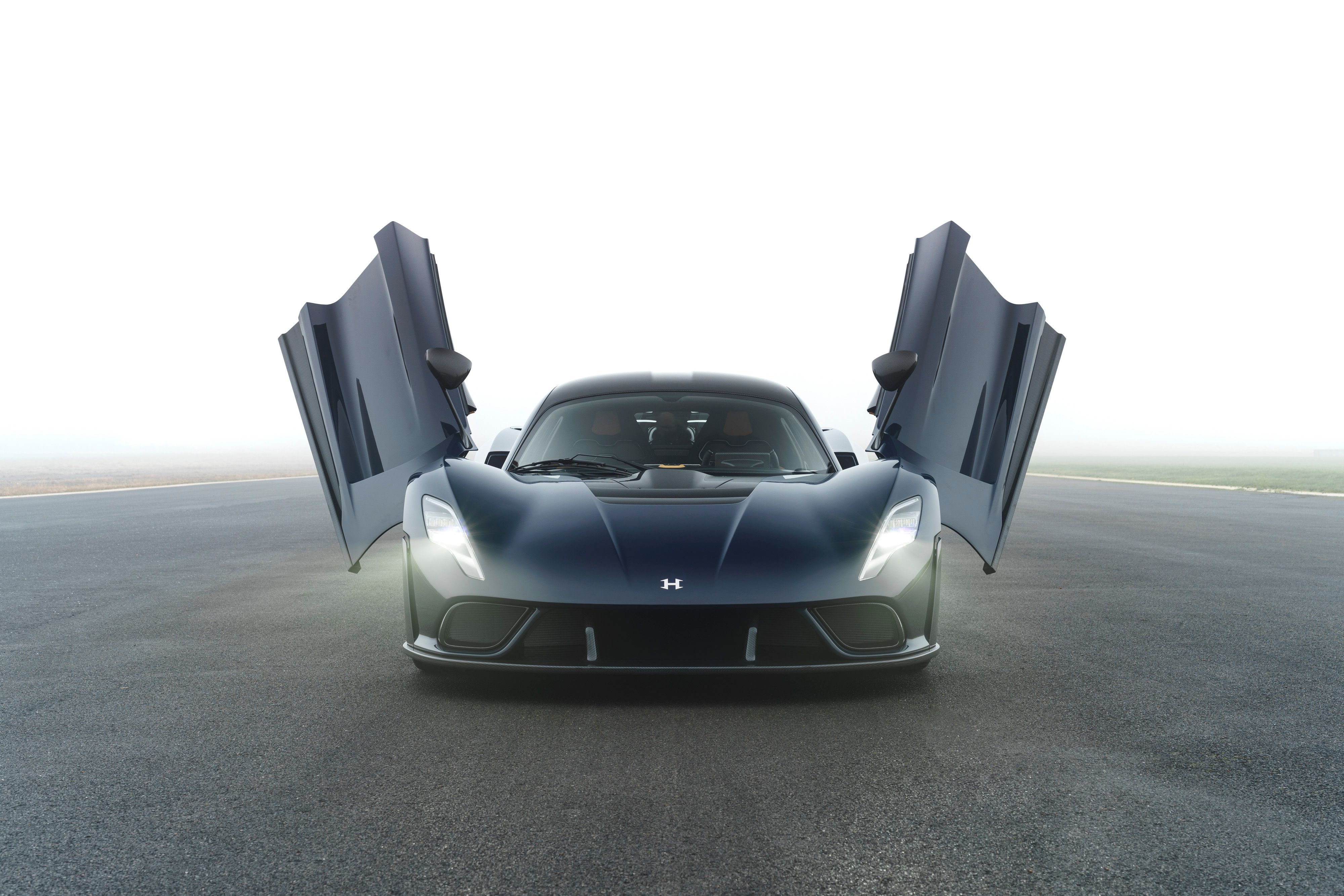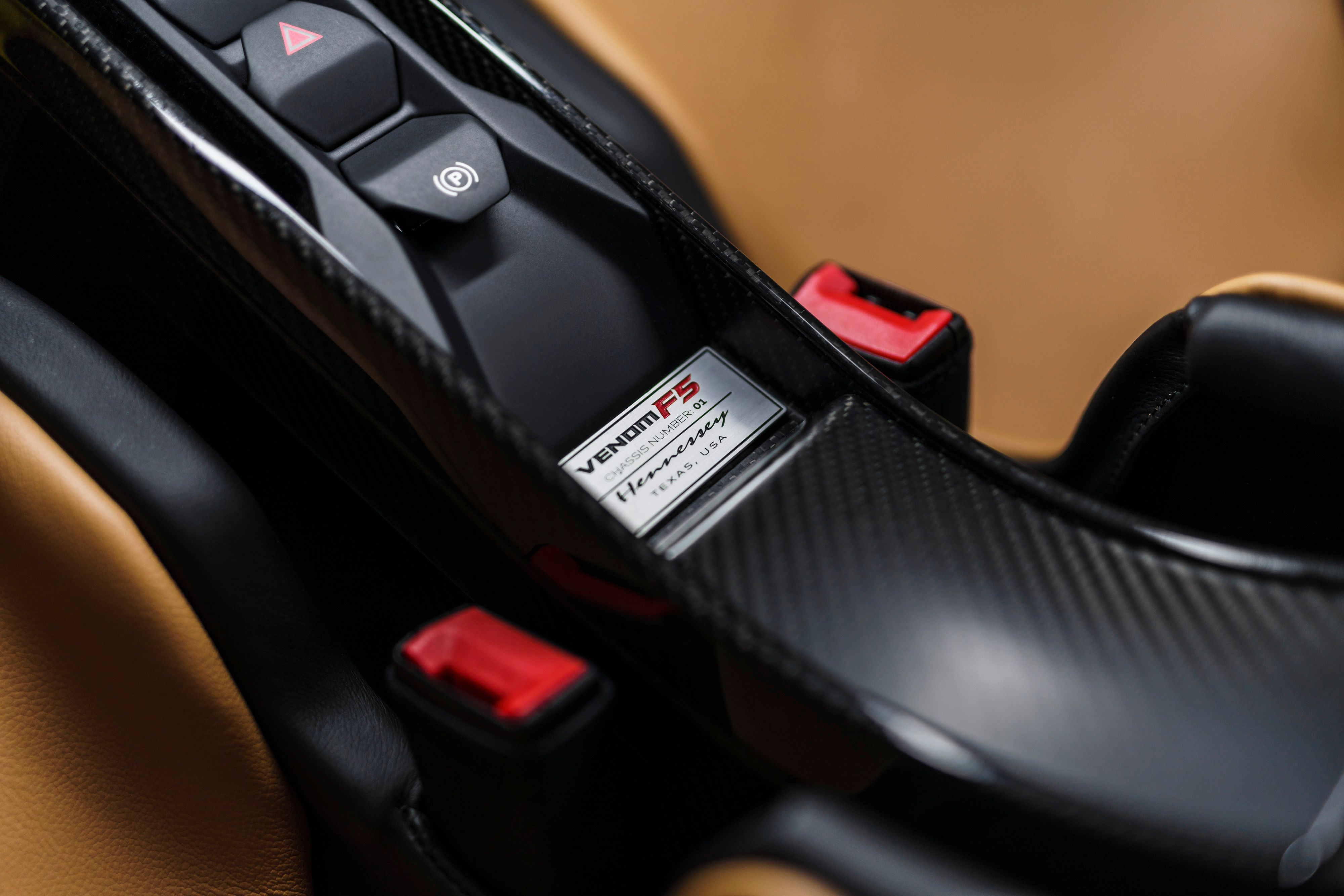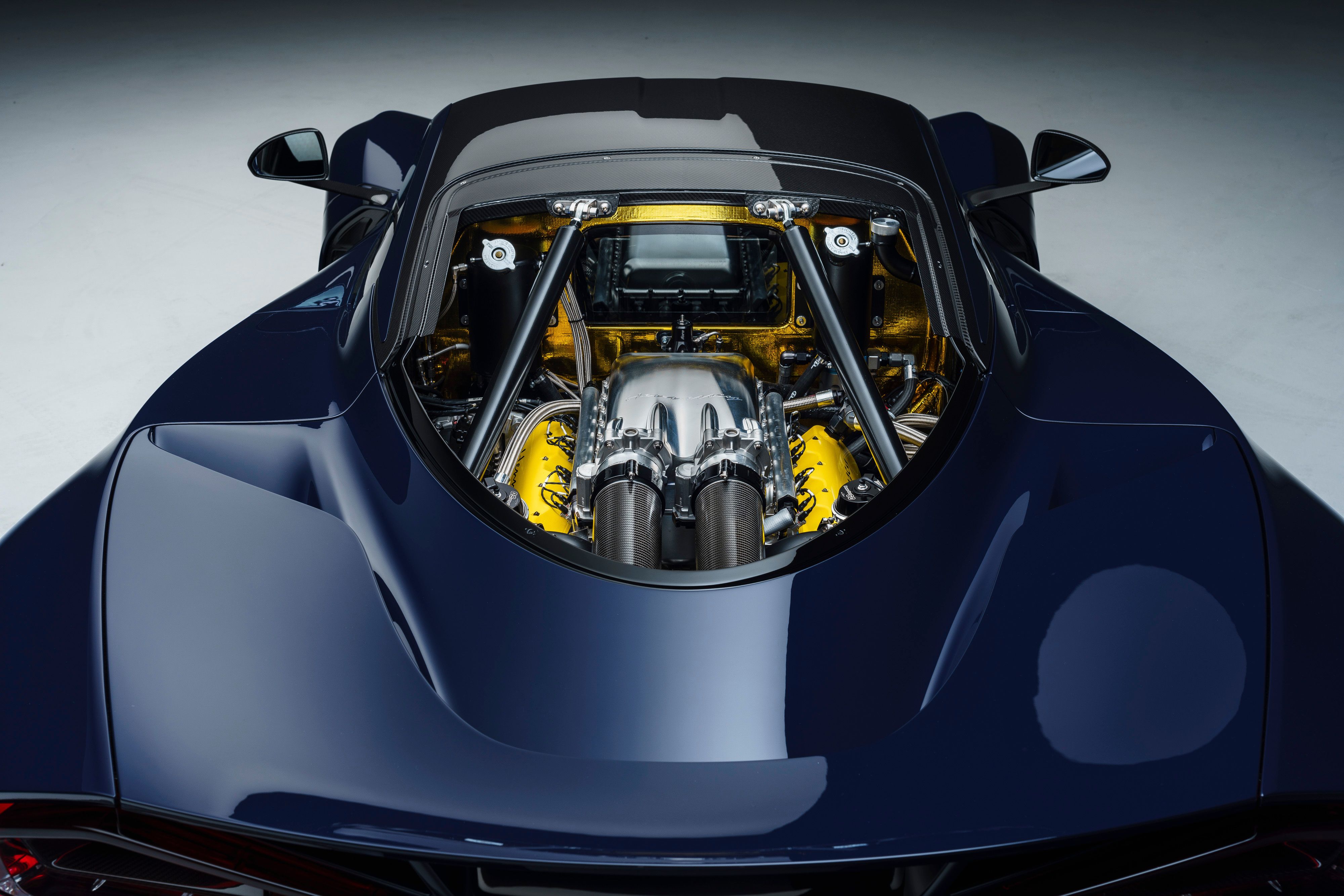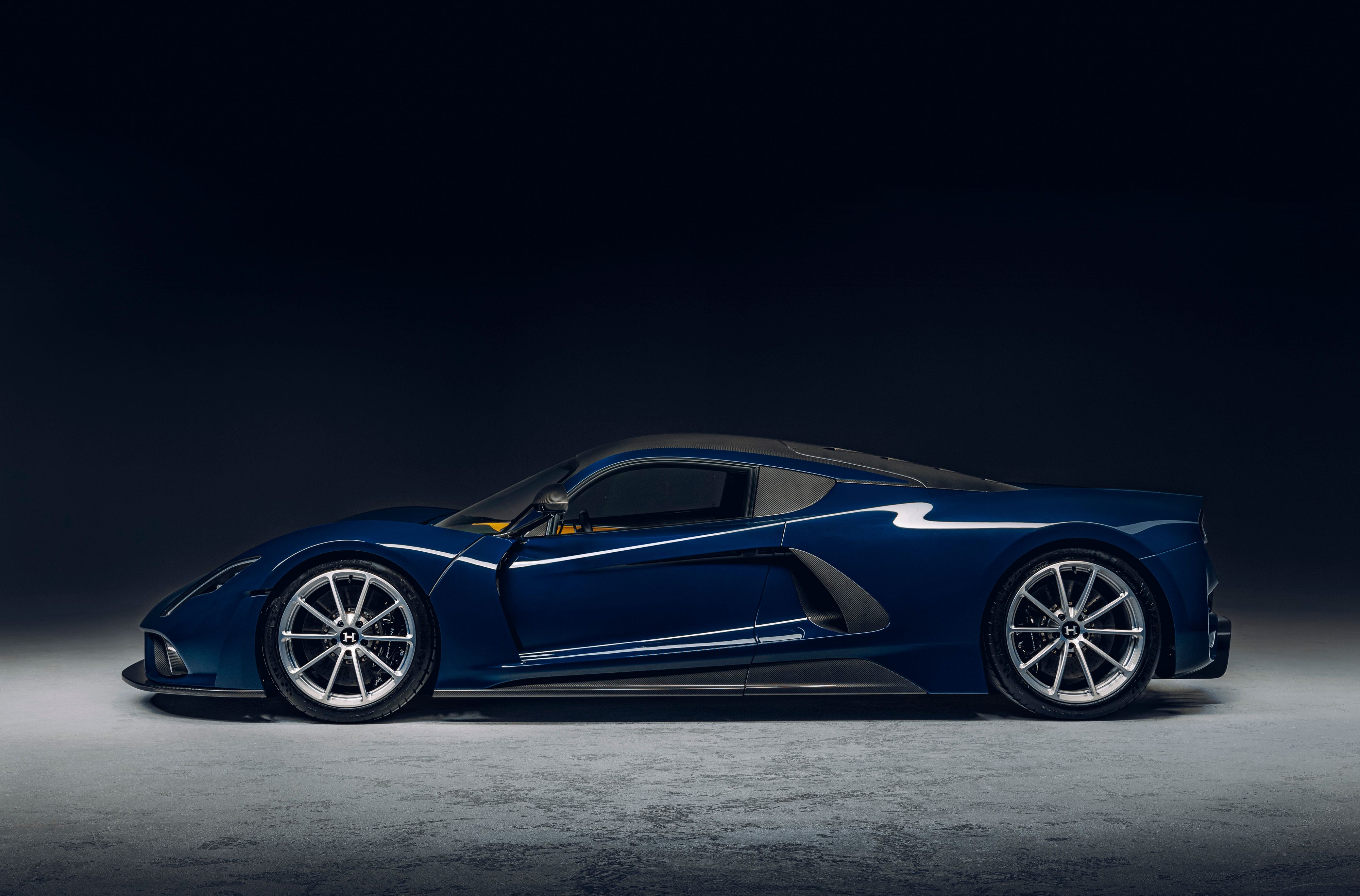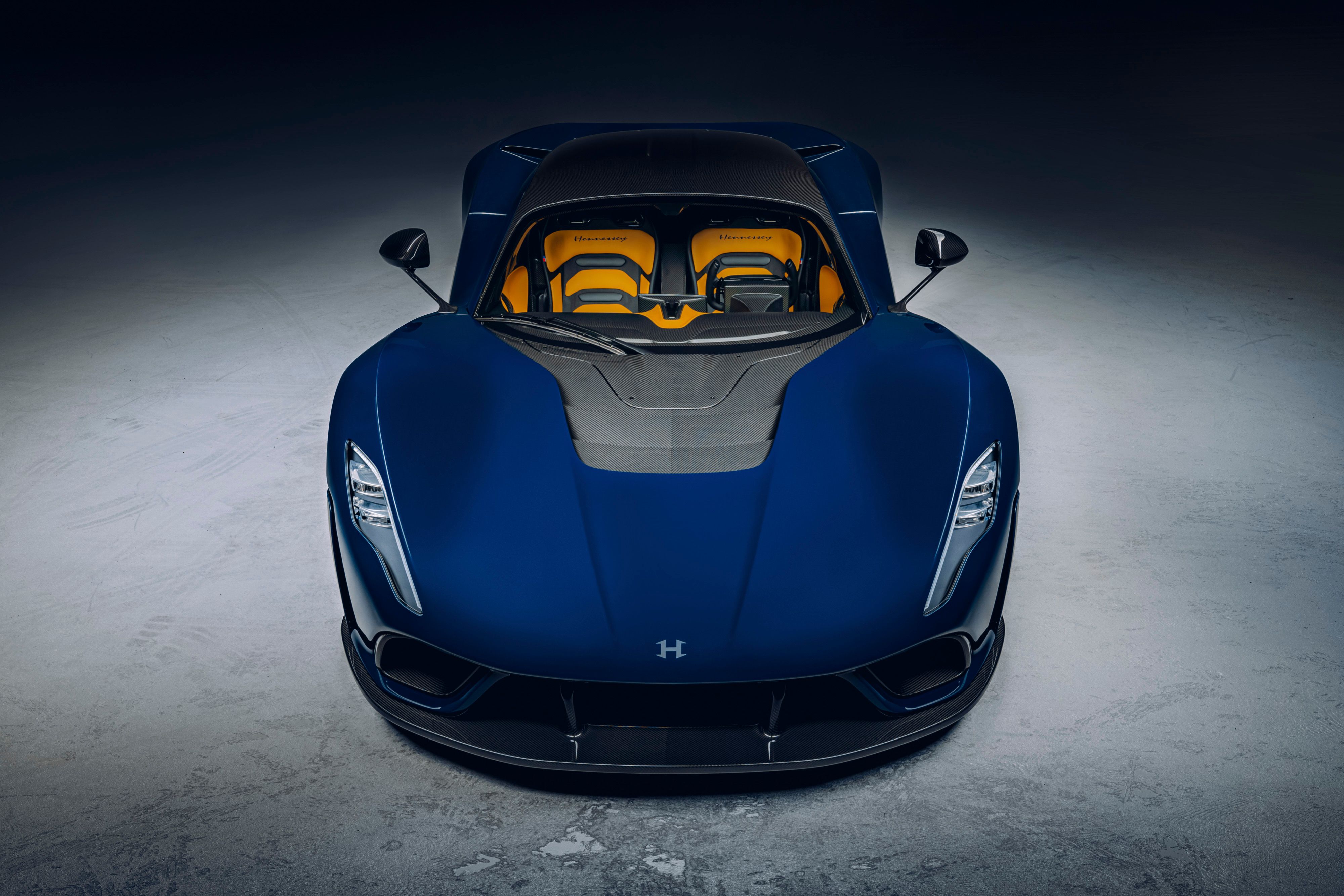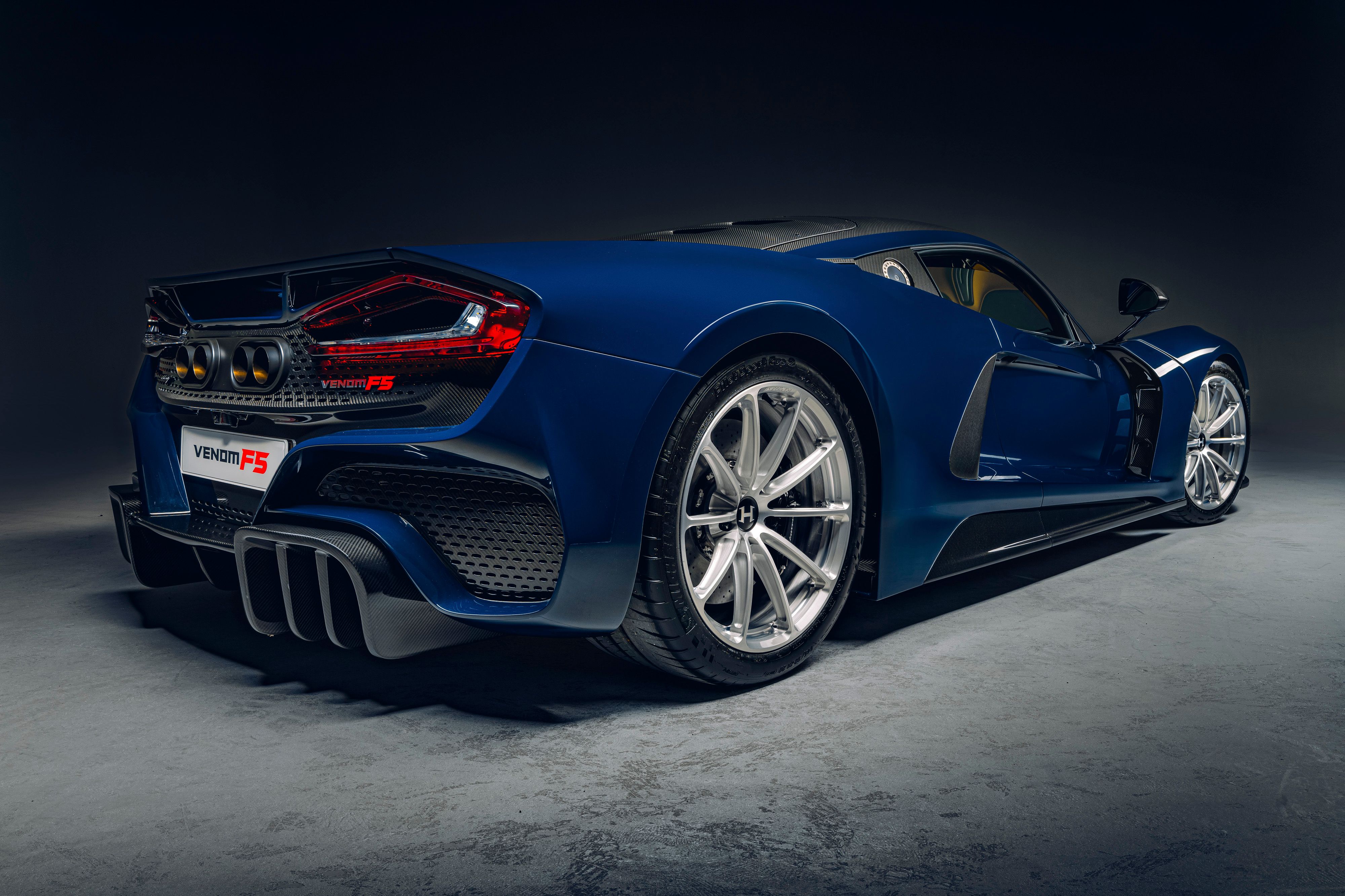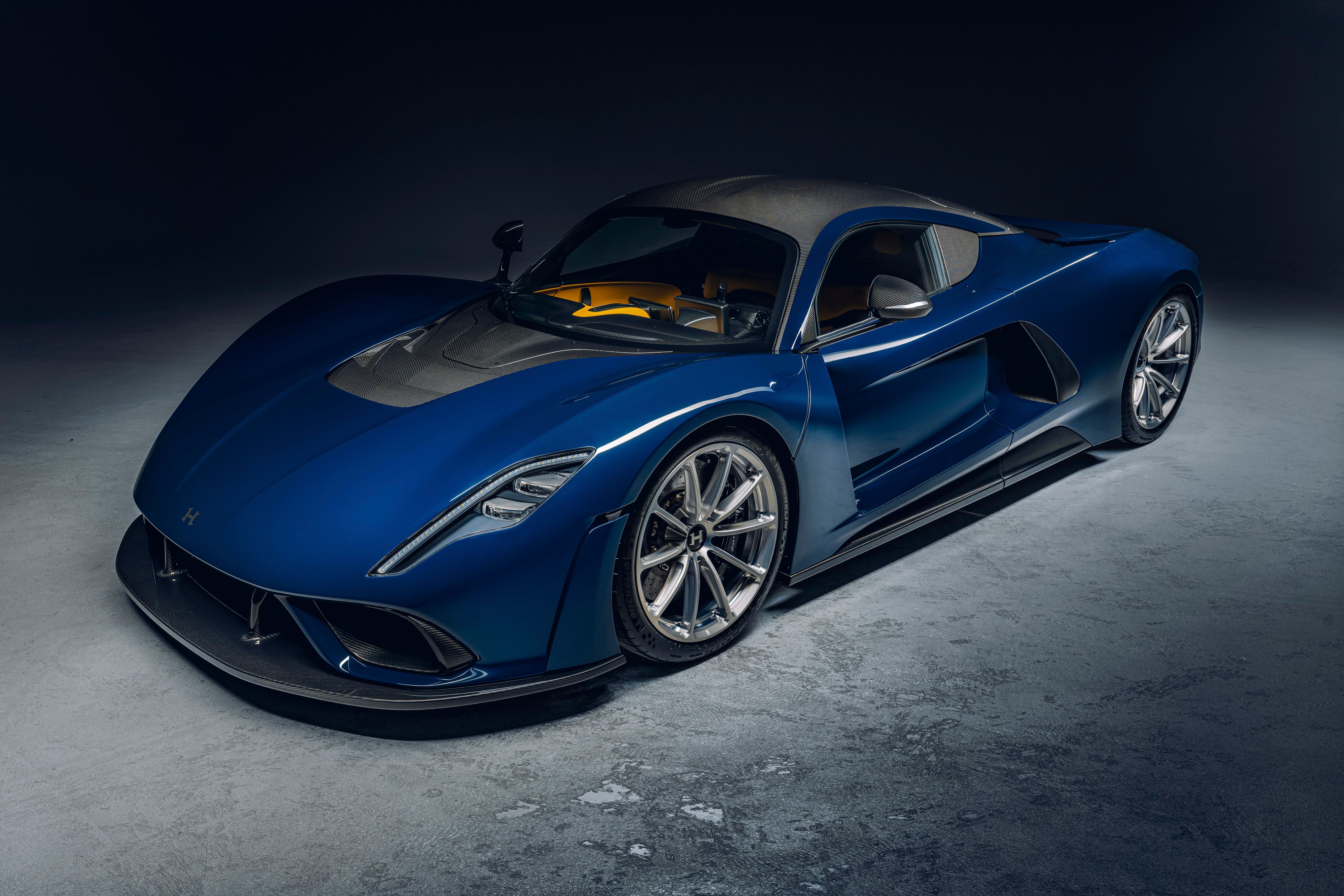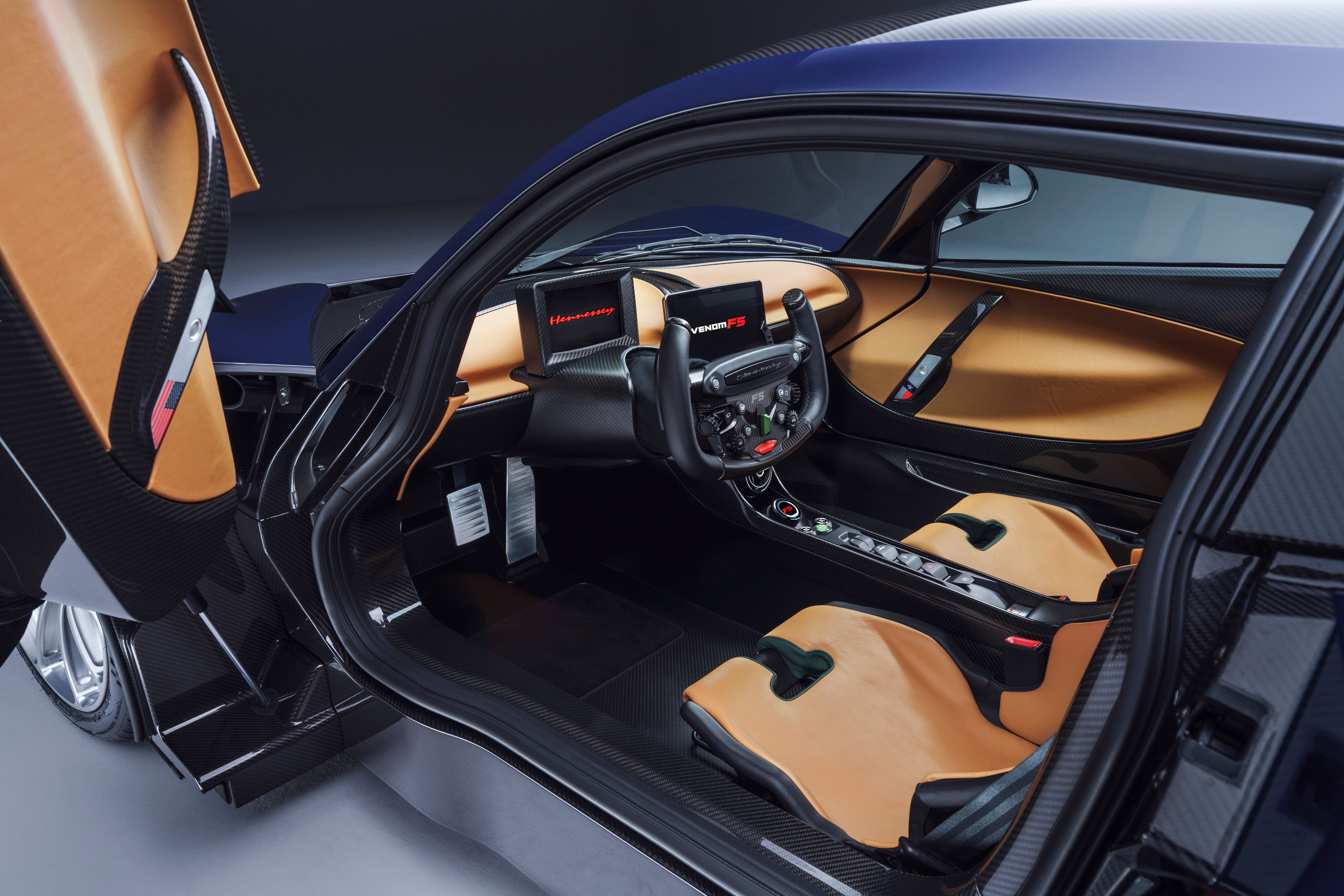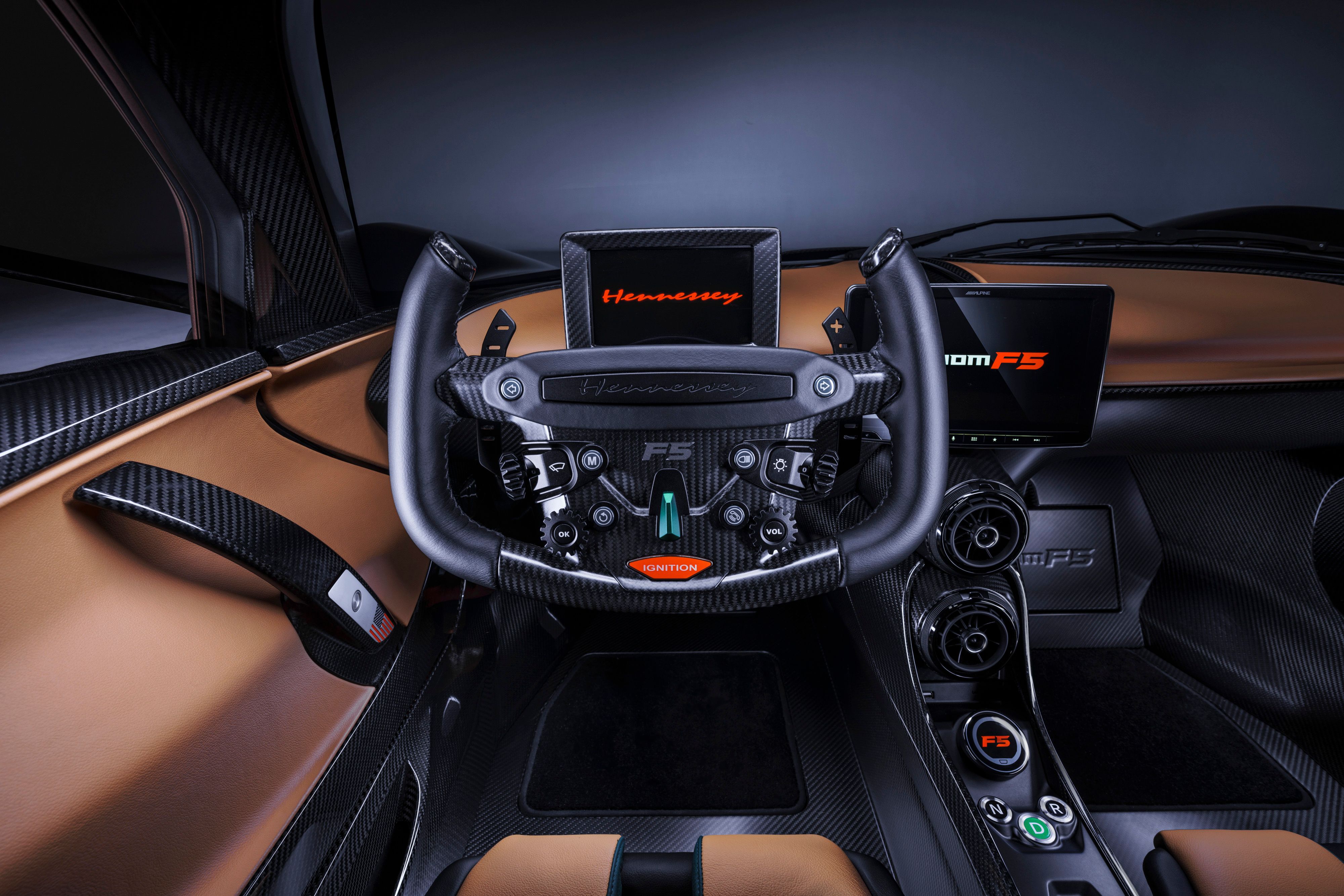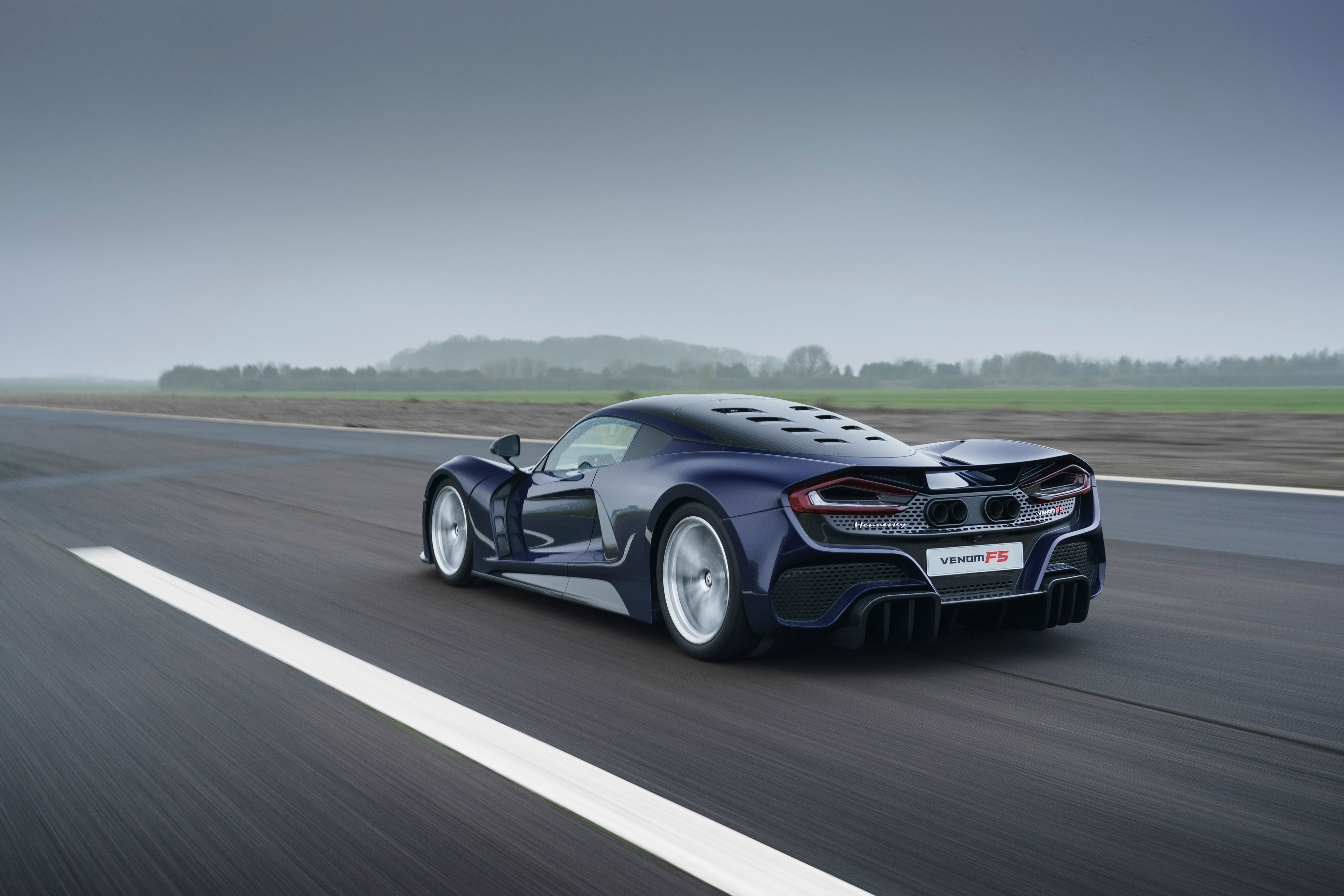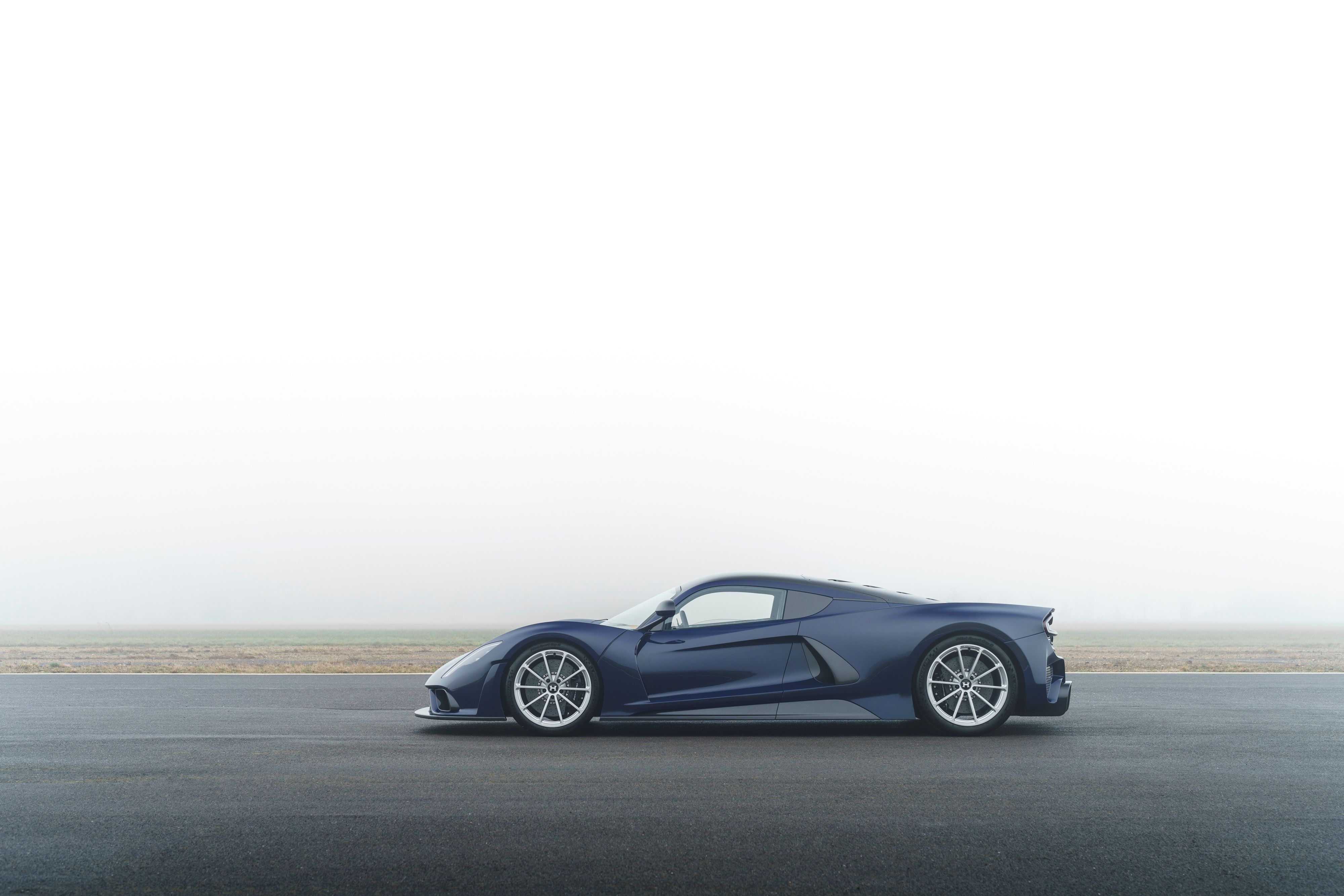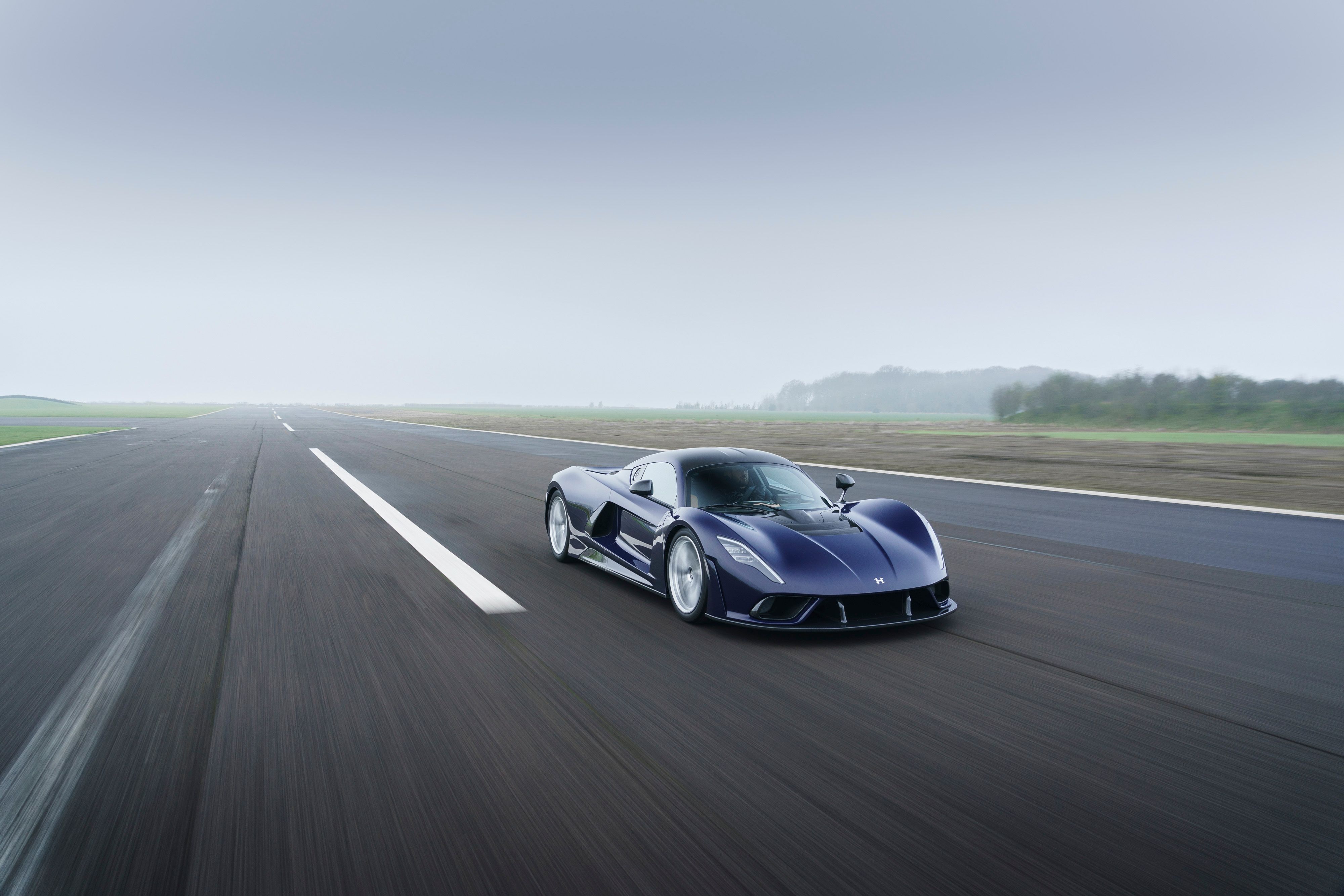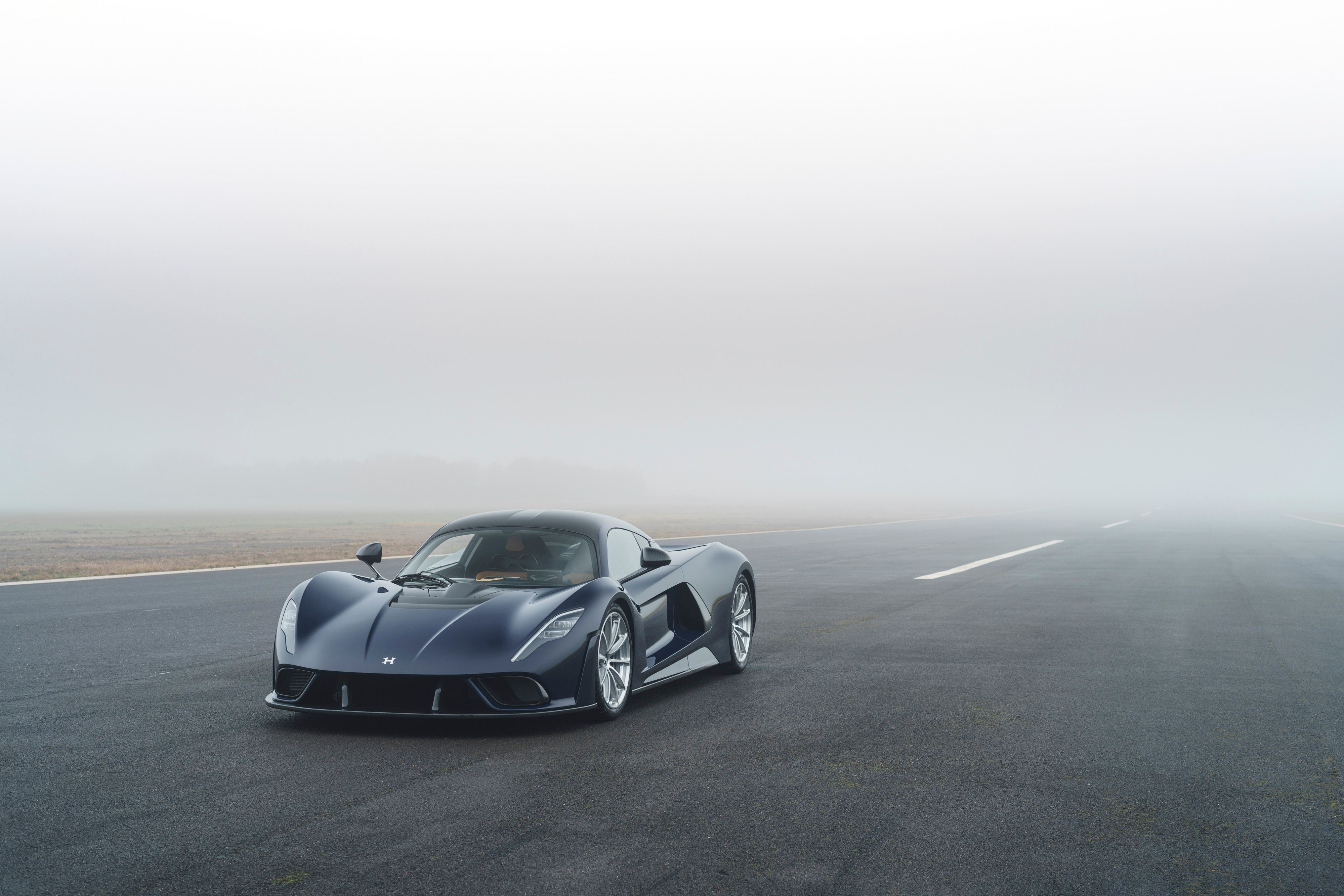The 2021 Hennessey Venon F5 is a supercar designed and produced by American company Hennessey Special Vehicles. A successor to the Venom GT, the Venom F5 was originally unveiled in prototype form in November 2017.
Come December 2020 and Hennessey finished the first customer car and is set to produce another 23 units for a total run of 24. The 2021 Venom F5 features a brand-new V-8 engine that cranks out more than 1,800 horsepower and Hennessey aims to set a new speed record for production cars in 2021. How does it compare to high-speed brutes like the Bugatti Chiron Super Sport 300+ and SSC Tuatara? Let's find out in the review below.
2021 Hennessey Venom F5
- Make: Array
- Model: 2021 Hennessey Venom F5
- Engine/Motor: V8
- Horsepower: 1817
- Torque: 1193
- [do not use] Vehicle Model: Array
Exterior
|
|
ids=959921,959922 |
no_overlay=false |
before_label=Hennessey Venom F5 |
after_label=Hennessey Venom GT> |
The Venom F5 is a massive departure from its predecessor, the Venom GT. But not only because it's a newer and more modern design.
At 183.7 inches long and 77.6 inches wide, the Venom F5 is only marginally larger than the Venom GT. As you'd expect from a modern supercar, the Venom F5 features a carbon-fiber body.
The styling of the F5 is in line with modern supercar design. It features a short front end with raised fender tops, a sloping nose, and a thin bumper that's mostly a collection of vents. The design is surprisingly clean, especially when you compare it to the SSC Tuatara, one of its main rivals. Toward the sides, the Venom F5 unfolds into a more aggressive design approach as the body becomes increasingly wider toward the back. There are massive intakes in the rear fenders, wide side skirts, and muscular rear haunches. The side mirrors are mounted high just behind the front fenders.
The roof is of the canopy, jet fighter-style variety, a common feature on modern supercars. It descends smoothly toward the rear fascia through a simple and vented engine hood. The simplicity of the design carries over to the rear. There's no massive wing or aero devices that stand out, but the shape of the deck lid and the integrated spoiler are proof that Hennessey designed this supercar with a top speed record in mind.
The rear fascia reminds me a bit of recent McLaren models, but that's probably because the taillights are shaped in a similar way, while the exhaust pipes poke out through the center. Everything is held together by a motorsport-style mesh that extends toward the bottom in the shape of the letter T. The lower section includes two additional (and quite large) outlets to the sides and a big twin diffuser in the center.
Hennessey says the Venom F5 has a drag coefficient of 0.39, which puts it far behind production models like the Porsche Taycan Turbo S (0.25) and Toyota Prius (0.24). A Cd of 0.39 is actually comparable to that of an SUV or even a minivan, but the Venom F5 doesn't need to be as sleek as a hybrid or EV. The Venom F5 is here to set new top speed standards and its drag coefficient is enough to provide stability at high speeds.
All told, the Venom F5 looks surprisingly clean on the outside and that's a breath of fresh air in a world of busy high-speed machinery like the SSC Tuatara and Koenigsegg Jesko.
Interior
The clean design of the exterior continues inside the cabin, where Hennessey opted for an uncluttered look with organic yet smooth surfaces.
The seven-inch instrument cluster features a carbon-fiber frame and its display functions and colors change with each driving mode.
The display frame isn't the only carbon-fiber element in this car. Actually, it would be easier to make a list of surfaces that aren't satin-finished carbon-fiber, because this lightweight composite is visible almost everywhere you look. Aside from sections of the dashboard, most of the door panels, and the seating surfaces and backrests of the seats, everything else is basically exposed carbon-fiber, which is what you want in a modern and very expensive supercar.
But even though the layout is simple and performance-oriented, Hennessey did not ignore the premium factor. The leather is supplied by Muirhead, one of Europe's oldest tanneries and the company of choice for many luxury brands, while trim also includes Alcantara and aluminum. The latter is overlaid on the carbon-fiber trim of the dashboard and it's also featured on the door handles, where it also includes the Texas and U.S. flags.
The carbon-fiber bucket seats provide solid lateral support, while the thin center console keeps all the important controls within reach for the driver. The center stack incorporates a small, 1.3-inch digital screen for A/C system adjustment, but there's also a larger, nine-inch screen at the top. The infotainment display provides access to Apple CarPlay and Android Auto, and satellite navigation, but it also includes Bluetooth and hands-free phone features.
There's really not a lot to say about the Venom F5's cockpit. It's not too fancy but not too spartan either. It provides a balanced combination of race-inspired and premium features, while the clean design is in line with most supercars you can buy nowadays.
Drivetrain and Performance
Just like its predecessor, the Venom F5 is powered by a twin-turbo V-8 engine. However, Hennessey dropped the old 7.0-liter unit and developed a slightly smaller 6.6-liter mill. Called "Fury," it's a 90-degree, push-rod, cross-plane design with a cast iron block and aluminum cylinder heads. The crankshaft, pistons, valves, and connecting rods are made from high-grade aluminum, titanium, and Inconel. It also features a unique intake manifold that places the intercooler between the plenum and the cylinder heads, allowing air temperature from the turbos to be reduced before entering the combustion chamber.
The "Fury" also includes a multi-stage dry sump oil system, while the ball-bearing turbochargers feature a 3D-printed titanium compressor. A stainless-steel and Inconel exhaust system rounds of the beefed-up drivetrain, which mates to a bespoke seven-speed semi-automatic gearbox.
How powerful is the 2021 Hennessey Venom F5?
The twin-turbo V-8 generates a massive 1,817 horsepower and 1,193 pound-feet of torque. That's a big improvement over the Venom GT, rated at 1,244 horses and 1,155 pound-feet of twist. In just three years, Hennessey managed to increase output by an outstanding 573 horsepower, which speaks volumes of the company's dedication to build the world's most powerful supercar.
How does the 2021 Hennessey Venom F5 compare to other hypercars?
Hennessey claims that the Venom F5 is the most powerful production vehicle in the world at the time of its unveiling. Well, this is true. The Venom F5 packs more punch than its rivals, even if the list includes monsters like the Bugatti Chiron Super Sport 300+, SSC Tuatara, and the Koenigsegg Jesko. The 8.0-liter W-16 in the Chiron Super Sport 300+ generates 1,578 horses, 239 horsepower below the F5. The SSC Tuatara also drops the ball, despite its massive 1,750-horsepower rating (coming from a twin-turbo, 6.9-liter V-8) on E85 fuel. The Koenigsegg Jesko is no match either. On E85 fuel, the Swedish supercar packs 1,603 horsepower, 214 horses less than the Venom F5.
How quick is the 2021 Hennessey Venom F5?
Hennessey has yet to release a final 0-to-60 mph acceleration figure, but it did say that the F5 needs less than three seconds to hit that speed. This isn't very revealing sadly. Supercars with so much power usually hit 60 mph in 2.6 seconds or less, so "less than three seconds" is a bit confusing. Does it need 2.9 seconds, which would make it slower than supercars with "only" 700 horsepower? Will it hit the benchmark in 2.2 seconds and obliterate everything in its path? We don't know, but it's important to point out that the Venom F5 is rear-wheel drive, so I'm expecting a record in this department.
On the other hand, the company revealed that the F5 hits 124 mph in 4.7 seconds, which is mighty impressive. That's 1.2 seconds quicker than the SSC Tuatara and 1.8 seconds quicker than the Bugatti Chiron.
How fast is the 2021 Hennessey Venom F5?
In 2014, the Venom GT became the world's fastest production car with a top speed of 270.5 mph. However, because Hennessey's test included just a one-direction run and production didn't include at least 30 units, it wasn't recognized by the Guinness Book of Records. Since then, Hennessey has been looking for way to beat that record and even exceed 300 mph. And that's exactly what the Venom F5 will do very soon.
Hennessey has yet to test the cars real-world top speed, but it claims that the F5 will reach at least 311 mph. This will be tested in the first half of 2021 at the NASA Shuttle Landing Facility in Florida. This time around, Hennessey will do two rounds, so it seems it's going for the official Guinness record.
But is it "311+" mph enough for a new benchmark? Well, that would be more than what the Bugatti Chiron Super Sport 300+ is capable of. Its top speed was rated at 304.7 mph in 2019, but it's not an official benchmark since the car was more of a pre-production prototype than a production model. But 311 mph wouldn't be enough to beat the SSC Tuatara, which hit a top speed of 316.1 mph in 2020. SSC's benchmark is disputed due to inconsistent video footage, but the American company said it will run a second test. As of December 2020, the official record is at 277.8 mph (Koenigsegg Agera RS), which Hennessey should surpass easily.
But the Texas-based brand is likely expecting the F5 to hit notably more than 311 mph.
No word on how good the Venom F5 is on the race track, but I wouldn't expect it to be as quick as the McLaren Senna and other track-optimized supercars. But we do know that it includes a Track mode in addition to Sport, Drag, Wet, and F5. The latter is the only mode that unlocks the maximum available power and torque.
Thanks to its carbon-fiber body and monocoque, the Venom F5 tips the scales at only 2,998 pounds. That's lighter than the Koenigsegg Jesko (3,131 pounds), but a bit heavier than the SSC Tuatara (2,750 pounds). The Venom F5 is some 250 pounds heavier than its predecessor, the Venom GT.
The F5 comes standard with bespoke Michelin Pilot Cup Sport 2 tires, while stopping power comes from carbon-ceramic brakes.
How much does the 2021 Hennessey Venom F5 cost?
No word on what options you can order yet, but Hennessey says each will be built to specific customer detailing, so I'm pretty sure each Venom F5 will end up costing in excess of $2.5 million.
The Venom F5 is notably more expensive than its predecessor, which sold for around $1.2 million before options. Compared to its closest competitors, the F5 is notably more affordable than the Bugatti Chiron Super Sport 300+, priced from $3.9 million and costs a bit less than the Koenigsegg Jesko, which comes in at $2.8 million. On the other hand, the Venom F5 is a bit more expensive than its U.S. rival, the SSC Tuatara, priced from $1.9 million.
The Venom F5 is limited to only 24 units. It may sound weird, but this production run makes it the least exclusive Hennessey yet, as the Venom GT was limited to just 13 examples.
Is the 2021 Hennessey Venom F5 better than the SSC Tuatara?
The SSC Tuatara is the F5's closest competitor, mainly because it is also designed and built in the United States. Just like Hennessey, SSC North America already has a solid background in supercar manufacturing, having introduced the Ultimate Aero back in 2004. SSC held the record for the world's fastest production car briefly in 2007 and in 2020 it attempted a new benchmark with the Tuatara. Powered by a twin-turbo, 6.-liter V-8 that cranks out up to 1,750 horsepower on E85 fuel, the Tuatara boasts a top speed in excess of 300 mph. SSC reportedly set a new record at 316.1 mph in 2020, but its benchmark was disputed due to inconsistent footage of the run. SSC promised to do a second run, so the Tuatara may return with a new top speed record in 2021. Limited to 100 units, the SSC Tuatara starts from $1.9 million and it's set to go into production in 2021.
Read our full story on the SSC Tuatara
Is the 2021 Hennessey Venom F5 better than the Koenigsegg Jesko
Bugatti may be the only carmaker in the 300-mph club as of December 2020, but we may soon have four manufacturers in this category. Koenigsegg joined Hennessey and SSC in the race beyond 300 mph with the Jesko, a supercar powered by a 5.0-liter V-8 that's good for 1,603 horsepower on E85 fuel. Already in production since 2020, the Jesko spawned a high-speed version called Absolut, which is the company's bet on exceeding 300 mph. The Swedish brand has yet to test it in the real world, but it claims that it will hit 330 mph in the right conditions. There's no word whether Koenigsegg plans to do a record run, but it could happen in 2021. The Koenigsegg Jesko retails from a whopping $2.8 million, with production limited to 125 units.
Read our full review of the Koenigsegg Jesko.
Conclusion
We first heard of the Venom F5 back in 2016, when Hennessey began talking about its replacement for the Venom GT. We saw the first concept in 2017 and Hennessey spent the last three years teasing us by slowly releasing photos and info on the hypercar. It's 2020 and the Venom F5 is finally ready to hit the road and prove what its creators have been bragging about since day one: that it can hit more than 300 mph. It will take a few months to find out how far it can reach, but the Venom F5 definitely has what it takes to get there. It's the most powerful production car ever built, it's been designed for this specific goal, and we know for a fact that every car that rolls out of Hennessey's shop, including tuners, is extremely fast. The Venom F5 could soon become the car to beat when it comes to top speed records.

